The Veterinary Profession in NSW 1924
– 2024
registration of veterinarians in New South Wales
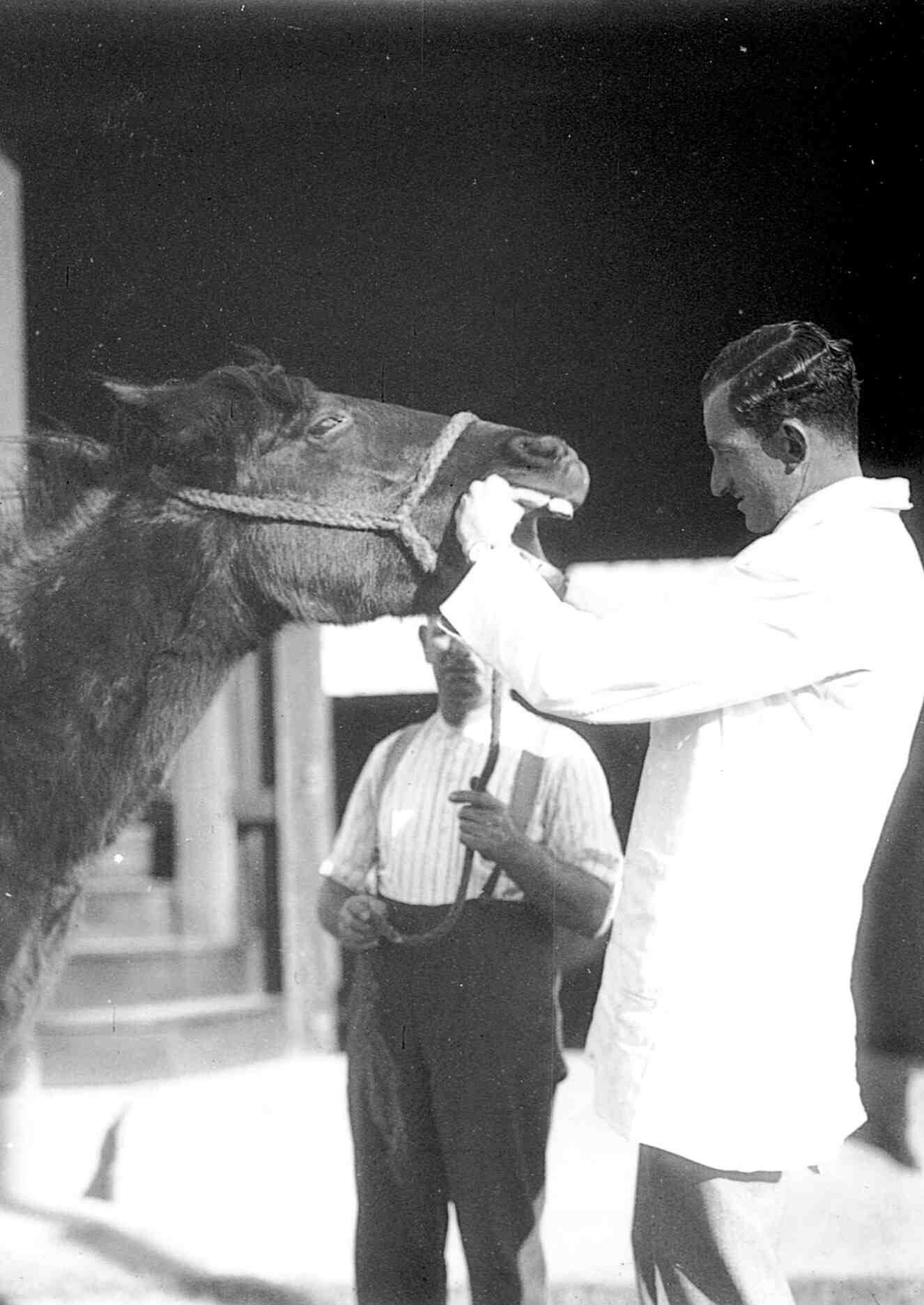
Veterinary
100
Practitioners Board of NSW Celebrating
years

“Some are well-known public
All have worked tirelessly in some way for the good of animals, their clients and the environment”
On the cover: Rex Gunn studying a horse outside the Round House at The University of Sydney in 1927. This page: The university’s veterinary anatomy bone collection and students dissecting a calf in the 1930s. Images: The University of Sydney Archives
Foreword
by the
Centenary Committee of the Veterinary Practitioners Board of New South Wales
The Veterinary Surgeons Act 1923 commenced January 1 in 1924 and was key to recognising the veterinary profession in NSW This timeline represents an attempt to summarise during the 100 years since its enactment.
for the Centenary Committee to create Practitioners Board of New South Wales
All have worked tirelessly in some way the environment. They have worked long service their local communities.

a private general or specialist practitioner caring for a myriad of domestic and wild advancing the understanding of disease
include all the wonderful veterinarians who have operated in NSW over the
was accurate as of March 2024.
that have shaped the profession in NSW over the past 100 years.
 Rex Gunn operating in The University of Sydney’s old surgery in 1925.
Image: The University of Sydney Archives
Rex Gunn operating in The University of Sydney’s old surgery in 1925.
Image: The University of Sydney Archives

1 920s


1924 1925
The Board of Veterinary Surgeons of New South Wales (now the Veterinary Practitioners Board) is established
The Veterinary Surgeons Act 1923 commenced on January 1, 1924, and remained in force until a new Act was passed
was to regulate the practice of veterinary science in NSW through assessing applicants for registration as veterinary surgeons, and by maintaining a register
The first Board met on February 4, 1924, chaired by Max Henry, Chief Veterinary Surgeon of the Department
also included veterinary surgeons Professor JD Stewart of The University of Sydney’s School of Veterinary Science, and Colonel AP Gribben of the Royal Agricultural Society; two non-graduates who were eligible for registration (Edgar Hamilton and MP Dunlop); and two members of the stockowners’
During drafting of the Act, the Executive explored many avenues to ensure
that members of the
Stock of NSW would be registrable when the Act
Due mainly to the efforts of Hamilton, the institute’s president at the time, inspectors were granted the opportunity to register and the institute was given a representative on the Board, a position that was filled by Hamilton until
At the insistence of Board chairman Henry – and with the support of Hamilton – all stock inspectors were made
The state was then divided into districts controlled by the ‘registrable district veterinarians’ as they later
The Stock Diseases Act 192 are still in operation through adoption in later Acts – was comprehensive in terms of the appointment of the inspectors and their powers in relation to the control
The Australian Veterinary Journal
In the journal’s inaugural issue, editor Max Henry referred to the ‘colonies’ working together for the national good, saying: “In some ways, nothing could have done our profession more good. For the first time in our history men from all Australia were thrown together in such a way as to obliterate the names of the different States. The word ‘Australia’ was carried on the shoulders of every man and it became a matter of far more importance that a man was ‘4th Division’ latter fact counted for nothing.”
Shutterstock



1928 1926
Australia becomes a member of the
For Animal Health
Many NSW government veterinarians and affiliated staff members have played key roles in the World Organisation For Animal Health. It was formed as the Office International des Epizooti in 1924 in response to the cattle plague rinderpest, with the aim of co-ordinating a global response against infectious animal diseases, disseminating information and improving animal health. It has done much to eradicate infectious diseases, some of which have potential for animalhuman/human-animal infection.
Max Henry is named President of the Australian Veterinary Association
After graduating from London’s Royal Veterinary College in 1906, Max Henry returned to Sydney and joined the Department of Agriculture as a Veterinary
to veterinary courses at the Sydney Technical and Hawkesbury Colleges prior to The University of Sydney degree being established in a Bachelor of Veterinary Science and continued to
Following his service in
1940, after a reorganisation of the Department, he was appointed Chief of the
A staunch supporter of the Australian Veterinary Association, he served as its President from 1926 to
the AVA awarded him the Gilruth Prize for outstanding
Herbert Robert Seddon is made an Honorary Lecturer at The University of Sydney
A New Zealander who graduated in 1921 from The University of Melbourne with a Doctor of Veterinary Science, Herbert Seddon worked tirelessly to see the passing of the Veterinary Surgeons Act 1923. He became President of the Australian Veterinary Association when it reformed in 1923, and the first Director of the Veterinary Research Institute established that year at Glenfield, which went on to become a significant central diagnostic arm of the State Veterinary Service. During his career at The University of Sydney from 1928 to 1936, he published more than 130 papers on livestock diseases. In 1936, he was appointed to the new Chair of Veterinary Science at The University of Queensland, until its temporary closure due to the war In 1954, he became Technical Director of the McGarvie Smith Institute at Ingleburn. That same year, the AVA awarded him the Gilruth Prize for outstanding service to veterinary science.
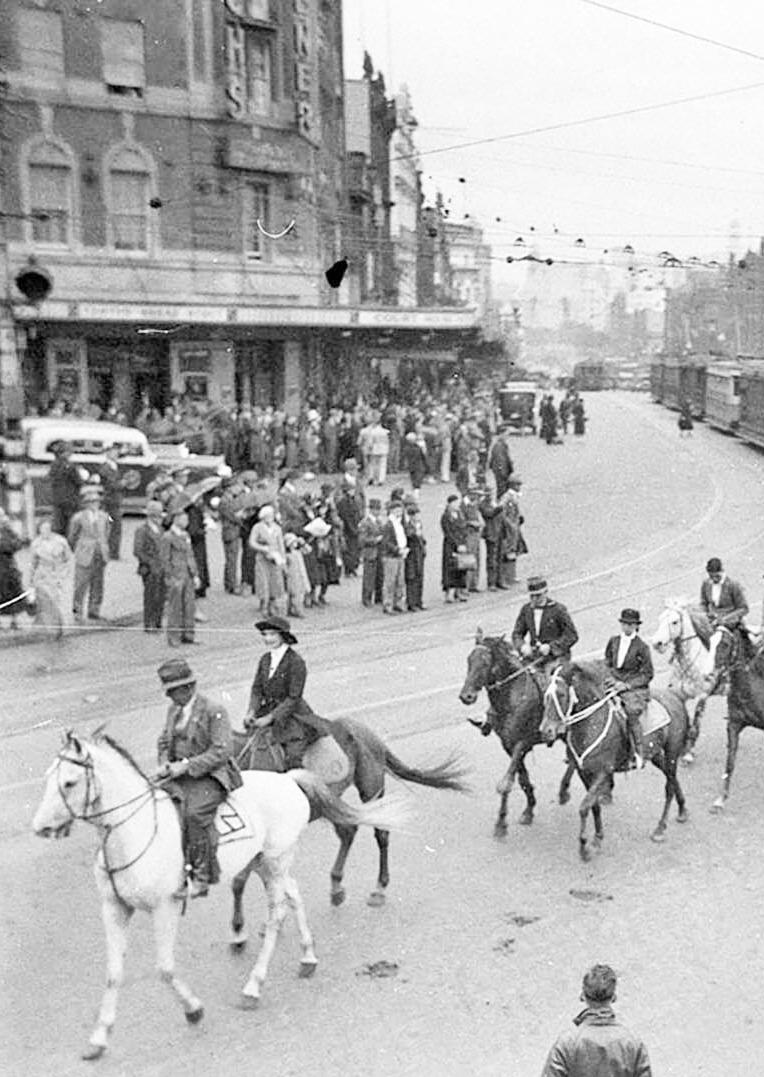 A parade through Sydney in 1934. Image: Alamy
A parade through Sydney in 1934. Image: Alamy




The University of Sydney becomes solely responsible for all veterinary education across the country
This followed the temporary closure of The University of Melbourne’s veterinary school at the end of 1928
graduates re-commencing of Queensland School of Veterinary Science did have a first-year intake of seven students on its original site at Yeerongpilly
students continued to complete their fourth and fifth years at The University
Ann Flora Froude Flashman becomes the first woman to enrol in The University of Sydney’s School of Veterinary Science
Having her final-year essay published in the Australian Veterinary Journal was a sign of things to come for
she became the first paid veterinarian at the Lost
She married Victorian politician Arthur Rylah, later becoming known as Lady Rylah, and set up her own
She continued writing, using the pseudonym John Wotherspoon for her Pet Talk column in Melbourne’s newspaper The Herald until the 1960s and for her books, The Australian Pet Book and The Australian Dog Book She was posthumously awarded the Belle Bruce Reid Medal as an outstanding female veterinary science graduate in 2006, to mark the centenary of the registration
Animal Health Laboratory opens
The Council for Scientific and Industrial Research (CSIR) established the laboratory in the veterinary precinct of The University of Sydney, with Sir Ian Clunies Ross, Chief Parasitologist in the CSIR’s Division of Animal Health, as its first Officer-in-Charge. In 1963, it became the CSIRO McMaster Laboratory, following the renaming of the CSIR to the Commonwealth Scientific and Industrial Research Organisation. Until the lab’s relocation to Prospect in the 1990s, it was the site of important research into microbiological and parasitological diseases of flocks and herds.

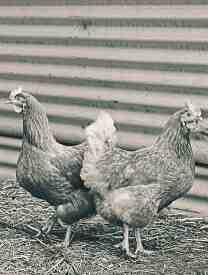

Beardmore Beveridge takes up a research post at
Animal Health Laboratory
Following his graduation from The University of Sydney in 1931, William Ian Beardmore Beveridge began his career in veterinary microbiology at the F.D. McMaster lab, working on foot rot and sheath rot in sheep.
During his distinguished international career, Beveridge worked in infectious diseases with One Health, the World Health Organization’s initiative that aims to balance the health of people, animals and new veterinary school at the documented for the first time a comprehensive catalogue of cancers in domestic animals.
He was Chairman of the World Veterinary Association for 18 years, from 1957 to 1975.
Leonard Hart embarks on his pioneering career in poultry health
After graduating from The Leonard Hart became the
Ernest Norman Larkin founded the Bondi Junction Veterinary Hospital
After graduating from The University of Sydney in 1926, Norman Larkin began working
Hart was first to diagnose infectious laryngotracheitis
avitaminosis A, and went on
a blood test for pullorum disease, and a vaccine
After a period working as a dairy farmer, he took up a position at the developing livestock
to Abbot Laboratories and then Dow Chemical, to
Hart was the first to create a poultry disease handbook for farmers, and his work inspired a generation of eminent
practitioner John Roy Stewart (one of the veterinary school’s inaugural 1914 graduate group) at Randwick, and went on to himself become a breeder and
Larkin founded the Veterinary Hospital at a time when treating domestic small animals was still in its infancy, and combined his
during the day and small animal patients in the evening.
He was the first to see the practice in the Hunter region of Scone, and became Veterinary Surgeon to the Hawkesbury Race Club for 37 years and Honorary Veterinary Surgeon to the Australian Jockey Club for of the AJC Apprentice School
Gryf fyn M/Unsplash


The Pasture Protection Boards are established by the Pastures Protection Act 1934
The Pastures Protection Act 1934 was passed to provide protection of pastures, the constitution of Pastures Protection Boards, and the Dingo Destruction Boards. The Act also amended the law relating to branding and earmarking of sheep, travelling stock reserves, public watering places, and the destruction of noxious weeds and animals.
In 1989, a Bill replaced the Pasture Protection Boards and Districts with Rural Lands Protection Boards and Districts. The District Veterinarian system supported by rate payers. It was started in the mid-1800s in response to the spread of sheep scab mite, which arrived with the First Fleet.
Since the introduction of this system, DVs have been the vanguard for biosecurity in NSW, and first responders to livestock disease outbreaks. Many have contributed to local communities, and helped raise the standing of the veterinary profession in the public’s eyes.
Patricia Kathleen Littlejohn becomes the first female graduate of The University of Sydney registered to practice in NSW
After graduating, Patricia Littlejohn (later Abbott) was a Tutor and Demonstrator in anatomy in The University of Sydney’s Faculty of
She went on to become a veterinary pathologist and travelled to Papua New Guinea in 1956 to work as
Department of Agriculture,
1980, she returned to The University of Sydney as a Demonstrator until she
the 100 women awarded the Belle Bruce Reid Medal as an outstanding female veterinary science graduate, to mark the centenary of the registration of Australia’s
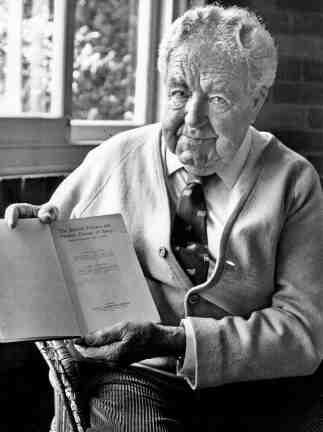
Hugh McLeod Gordon publishes his landmark book with co-author Sir
Pioneering parasitologists
Hugh Gordon and Sir Ian Clunies Ross collaborated at the F.D. McMaster Laboratory and their publication, The Internal Parasites and Parasitic Diseases of Sheep, was pivotal to the understanding of ovine parasite control.
Gordon was a Founding Member and first Vice-President of the World Association for the Advancement of Veterinary Parasitology, and a supporter of the Australian Veterinary Association, acting as NSW President in the 1940s. He was made a Fellow of the AVA in 1959 and received the Gilruth Prize for his service to veterinary science in 1965.
He continued to publish on the epidemiology and treatment of parasitic diseases until his retirement from the CSIRO in 1974. He then resumed his teaching role in parasitology at The University of Sydney In 1986, he was appointed a Member of the Order of Australia in recognition of his service to veterinary science.
Shutterstock



Pharmaceutical veterinarian Arthur establishes his vaccine company
Arthur F Webster had already graduated with a pharmacy degree from The University of Sydney when he re-enrolled to study veterinary science.
After graduating in 1936, he established Arthur Webster Pty Ltd with the support of his son Arthur C Webster, a veterinary graduate from The University of Queensland. By the 1970s, the company had become the largest producer of veterinary vaccines in Australia.
Webster ’s work focused on diseases impacting the local livestock industry, and the development of vaccines for diseases in poultry The company produced global-first vaccines and many medicines that became standard.
He served as President of the Australian Veterinary Association in 1980. In 1985, he was appointed a Member of the Order of Australia in recognition of his service to veterinary science. The AVA awarded him the Gilruth Prize for his service to veterinary science in 1987
Robert Anthony Patten is appointed Superintendent of Taronga Zoological Park
A graduate of The University of Sydney’s first veterinary group in 1914, Robert Patten became a pathfinder in zoo and wildlife veterinary medicine after becoming the Superintendent (later Curator) at Taronga Zoological Park.
He initially worked under Albert Sherbourne Le Souëf, a Melbourne Veterinary College graduate who oversaw the Zoological Gardens at Moore Park in 1903 and its eventual move to Mosman in 1916.
A Member of the Royal Zoological Society of New South Wales, Patten published articles on zoo animals in its journal Proceedings, as well as the Australian Veterinary Journal and in magazines in Australia and overseas.
He became the first radio ‘media’ veterinarian, appearing as a pannellist from 1947 to 1954 on Nature Speaks, a wildlife program chaired by John Dease on the 2GB radio station. After leaving the zoo in 1954, Patten opened a veterinary practice at Kellyville.
Joseph Drabble publishes
his landmark book Textbook
of Meat Inspection
A Meat Inspector prior to his enrolment at The University of Sydney, Joseph Drabble was a strong advocate of the science behind meat inspection, as well as its role in understanding diseases of livestock.
Following his graduation in 1922, he became a Veterinary Officer at Homebush Abattoirs as well as a long-term Lecturer in meat inspection at The University of Sydney’s Faculty of Veterinary Science.
Drabble’s book, Textbook of Meat Inspection, became a foundation for the production and inspection of the Australian export meat industry The 10th edition was printed in 1969.

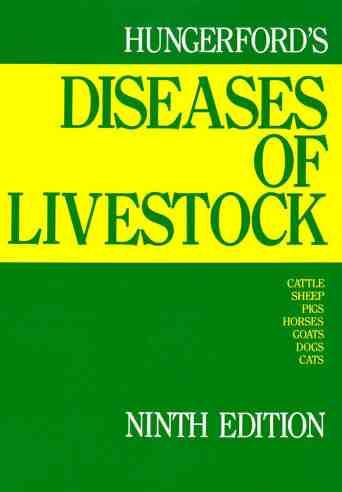

Thomas Gordon Hungerford publishes
After graduating from The Thomas Hungerford worked for the NSW Department of Agriculture for 11 years as a District Veterinarian and during which he developed programs to eradicate
While a Lecturer at The University of Sydney and Hawkesbury Agricultural College, his research into preventive medicine for primary producers led him to publish his first book, Diseases of Poultry Diseases of Livestock then followed in
Hungerford was known for his work as a pathfinder in rural practice, thanks to the pioneering business model he established in 1945 with this practice in Penrith, which went on to become the largest private
He was a driving force for the establishment and expansion of The University of Sydney’s Postgraduate Foundation in Veterinary
Science, since renamed the Centre for Veterinary
During Hungerford’s time as Technical Director of the foundation from 1968 and then Director from 1974, his model for continuing veterinary education helped to change the face of similar organisations around the in 1987, his methods were
He received numerous awards during his career: the Australian Veterinary Association’s two highest honours for veterinary professional excellence, the Seddon Prize in 1967 and the Gilruth Prize in 1971; in 1977, he received the Queen’s Silver Jubilee Medal; and in 1980, he was
in recognition of his service
The Australian College of Veterinary Scientists awarded him an Honorary Fellowship in 1982 and the senate of The University of Sydney made him a Fellow
James Douglas Stewart retires as Dean of The University of Sydney’s Faculty of Veterinary Science
After graduating from The University of Edinburgh’s JD Stewart returned home and went into private at the NSW Department
While teaching veterinary science at the Sydney Technical College, he saw the need for a veterinary
through his efforts that The University of Sydney’s Department of Veterinary Science was established in 1910, with Stewart as
He was a key supporter of the Veterinary Surgeons Act 1923 and the Australian Veterinary Association, for which he was the inaugural made a Fellow of the AVA in 1941 and awarded the Gilruth Prize for his service
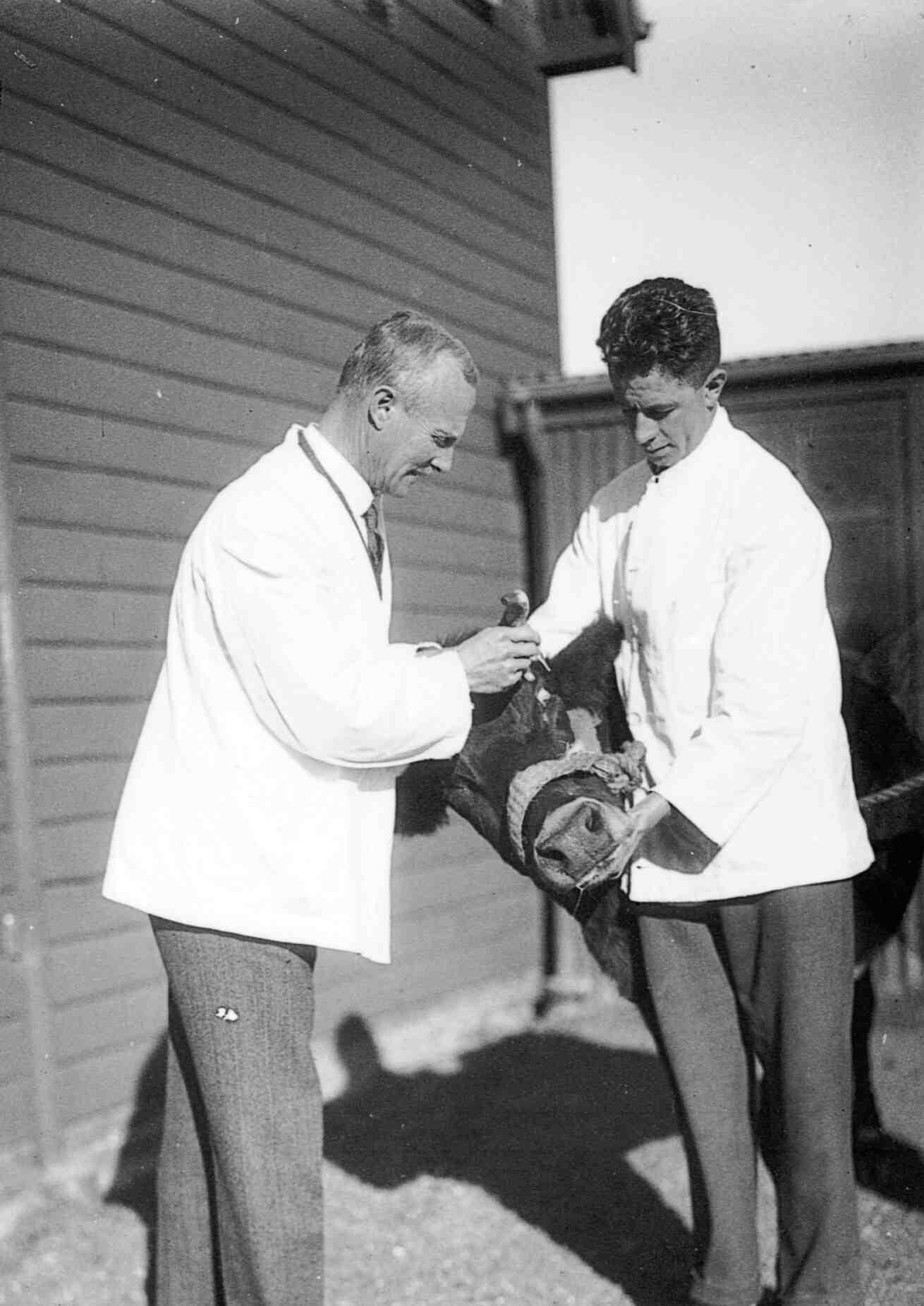 JD Stewart (left) with house surgeon JK Hawthorne at The University of Sydney’s Veterinary School in 1927. Image: The University of Sydney Archives
JD Stewart (left) with house surgeon JK Hawthorne at The University of Sydney’s Veterinary School in 1927. Image: The University of Sydney Archives
 The University of Sydney Regiment in the early 1940s.
Image: The University of Sydney Archives
The University of Sydney Regiment in the early 1940s.
Image: The University of Sydney Archives
4 0 s
19


1940
of Veterinary Professor at The University of Sydney’s Faculty of Veterinary Science
Following his graduation from The University of Sydney in 1921, Ian Clunies Ross became a Lecturer in veterinary anatomy at the university After spending time in England researching parasites, he returned in 1923 and began to build a reputation as an applied scientist and scientific communicator
The new Council for Scientific and Industrial Research started to focus on animal health and nutrition, and appointed Clunies Ross as Chief Parasitologist in 1926. When the CSIR’s F. D. McMaster Animal Health Laboratory opened adjacent to The University of Sydney veterinary school in 1931, he became Officer-in-Charge. His distinguished research career saw him earn a Doctor of Veterinary Science from The University of Sydney in 1928 for his thesis on the hydatid parasite. He published more than 50 scientific papers, and from 1928 to 1937 served as editor of the Australian Veterinary Journal. In 1936, he and fellow CSIR parasitologist Hugh Gordon published their landmark research in their book
The Internal Parasites and Parasitic Diseases of Sheep
In 1946, following the end of his tenure as Professor at The University of Sydney, he was appointed to the CSIR’s Executive Committee, working on the agricultural and biological divisions. In 1949, he became the Chairman of the renamed CSIRO (Commonwealth Scientific and Industrial Research Organisation), a role he held for the rest of his career and for which he was awarded a knighthood in 1954.That same year, he was elected a Foundation Fellow of the Australian Academy of Science. He continued to be a valued member of the profession and was a mentor to many. He was made a Fellow of the Australian Veterinary Association in 1949, having served as its President from 1935 to 1936.
Following his death in 1959, the new laboratory at Prospect was named the Ian Clunies Ross Animal Research Laboratory The $50 note issued in 1973 bore his image, marking his contribution as a spokesman for Australian science.

becomes the first private veterinary practitioner to set up in Wollongong
New Zealander Robert Taylor graduated from The University of Sydney in 1939, and a year later established his practice,
private practitioner outside the metropolitan area from Sydney to Melbourne and west to Perth. He provided a clinical service eradication of brucellosis and
a Veterinary Surgeon for racing clubs in the area. After ‘retiring’ in 1969, he established Harden Veterinary Hospital.
A scholar of veterinary history, he was Foundation President of the Australian Veterinary History Society in 1991, and served the Australian Veterinary Association for more than 60 years. He was instrumental in the creation of the Veterinary Benevolent Fund in 1974, established to help veterinarians in tough times.
A month after he passed away in 2006, Taylor was posthumously awarded a Medal of the Order of Australia for his service to veterinary science.



1941 1945
Virginia
Esther
academic
career
at The University of Sydney
The seventh female graduate of The University of Sydney, its first long-serving female academics, starting as a Demonstrator in veterinary anatomy and retiring in 1982
The university awarded her an Honorary Master of
An authority on mare a study on mare ovulation in the 1960s that led to change
She was as well known for her achievements as she was as a researcher, educator, mentor and role model for the generations of students, She was still a registered
the 100 women awarded the Belle Bruce Reid Medal as an outstanding female veterinary science graduate, to mark the centenary of the registration of Australia’s
takes a lead role in demobbing the mounted corps while serving in the Australian Women’s Army Service
After becoming the fifth female graduate from The University of Sydney in 1938, Kathleen Farr served as a Captain working in the field of veterinary science in the Australian Women’s Army Service from 1943 to 1946.
Farr ’s duties included demobbing some of the 25 Light Horse Regiments in order for them to become mechanised.
After the war, she married Thomas Walker in 1946, and practised in western NSW while raising a family
A supporter of the Australian Veterinary Association, Farr received its Meritorious Service Award in 1997. In 1999, she was awarded a Medal of the Order of Australia for service to veterinary science.
In 2006, Farr was among the 100 women awarded the Belle Bruce Reid Medal as an outstanding female veterinary science graduate, to mark the centenary of the registration of Australia’s first woman in 1906.
to
an increasing influx of European graduates fleeing oppression
Many of the practitioners who arrived in Australia following the war had graduated from nonprescribed European universities, which led to issues of registration in
The University of Sydney offered to assess and examine candidates over a two-year period to prepare
This issue eventually led to the establishment of the Australasian Veterinary Examination Committee (formed by the Australasian Veterinary Boards Council); it ensures the Australasian Veterinary Examination used to assess overseastrained veterinarians is consistent with the standard
Library of
State
NSW



1945 1947 1948
Douglas Johns becomes NSW’s first flying vet
University of Sydney in 1940, Douglas Johns immediately joined the war effort, initially with the Australian Army Veterinary Corps, looking after thousands of horses, and later with the packhorse
Following the war, Johns started a practice in Wagga Wagga and learnt to fly small aircraft, becoming NSW’s first private veterinarian to deliver services by plane; he would land his Tiger Moth in
After working in Canberra as a government Veterinary
spent 20 years developing farm health products at its
he served as the Honorary Archivist for the Australian Veterinary Association and often wrote in the Australian Veterinary History Journal
Having missed his 1940 graduation, he received his degree 57 years later, along
Harold Roy Carne is appointed Dean of The University of Sydney’s Faculty of Veterinary Science
Following his 1923 graduation, Harold Carne worked at the Glenfield Research Station and as a Walter and Eliza Hall Scholar in Paris, then returned to The University of Sydney in 1928 as a Lecturer in veterinary pathology and bacteriology.
He obtained his Doctor of Veterinary Science in 1934 for research on corynebacterial infections in domestic animals.
In 1947, he was appointed Hughes Professor of Veterinary Pathology and Bacteriology, a role he held until his retirement in 1966. During his tenure as Dean until 1953, Carne was instrumental in establishing the Rural Veterinary Centre at Camden in 1954. He served as Dean again from 1960 to 1961.
From 1940 to 1950, he was the Honorary Secretary of the Australian National Research Council. He was President of the Australian Veterinary Association from 1947 to 1948, and elected a Fellow in 1955. From 1955 to 1961, he chaired the CSIRO State Committee.
James Harrington Whittem becomes renowned as a pathologist
Having graduated from The University of Sydney in 1942, James Whittem returned to teach veterinary pathology from 1948 to 1957, during which he and Douglas Blood introduced the systematic application of evidence to clinic-
From 1958, he played a key role in eradication programs in the Northern Territory as and Chief Veterinarian, and was instrumental in creating an animal welfare framework
Research Laboratories in Victoria, and he worked with the new Commonwealth and States Veterinary Committee from 1971, before moving to Washington DC as a
For service to veterinary science, he was awarded the Australian Veterinary Association’s Gilruth Prize in 2011 and the Medal of the
 Virginia Osborne and Rex
Veterinary Science at The University of Sydney in 1981 Image: The University of Sydney Archives
Virginia Osborne and Rex
Veterinary Science at The University of Sydney in 1981 Image: The University of Sydney Archives
 The University of Sydney Calendar Supplement 1952.
Image: The University of Sydney Archives
The University of Sydney Calendar Supplement 1952.
Image: The University of Sydney Archives
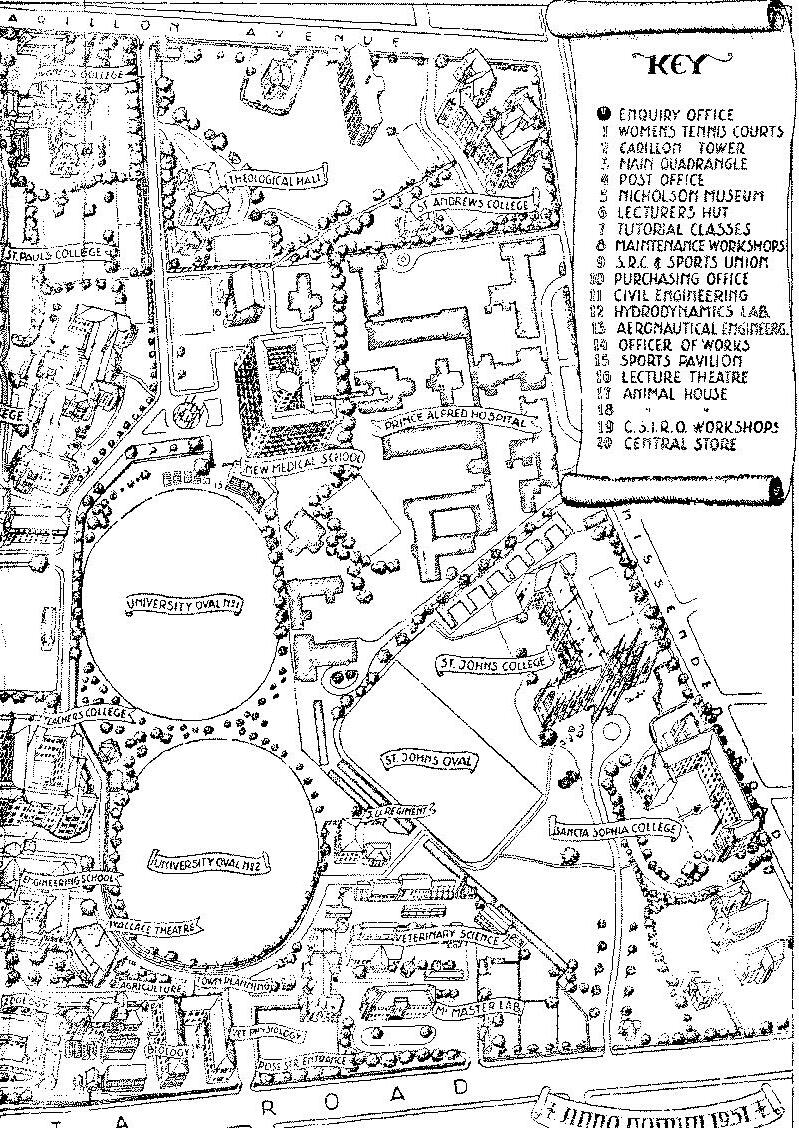
1
950s
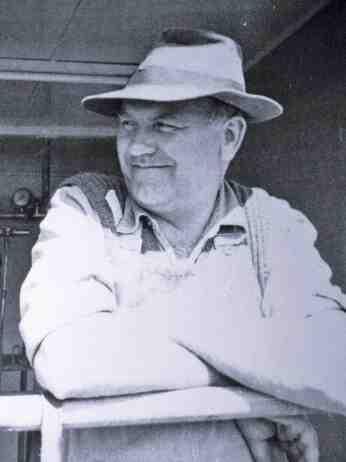
1950
Veterinarians from post-war Europe set up practices on the NSW South Coast
The start of the decade saw three Latvians and three Ukrainians from Poland working along the South Coast from Nowra to Dapto. Five were employed by the Area Animal Health Service, and one by the NSW Department of Agriculture, however, all eventually ended up in private practice, working closely with the South Coast Dairy Cooperatives.
Latvian-born Artis Medenis (pictured) established a private practice at Gerringong in 1953, after studying for two years at The University of Sydney and obtaining registration.
His expertise in dairy cattle practice, particularly obstetrics and infertility management, was recognised in 1971 when he became a Foundation Member of The Australian College of Veterinary Scientists.
In 1995, Medenis received the Seddon Prize for clinical contributions to veterinary science from the Australian
he was awarded a Medal of the Order of Australia for service to veterinary science.
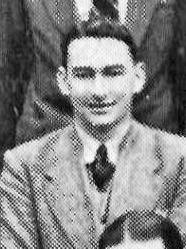
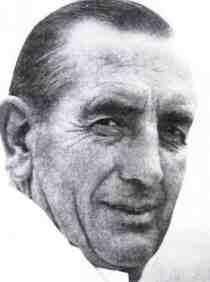
Douglas Henry Mumford joins the NSW Department of Agriculture
A 1943 graduate of The University of Sydney, Douglas Mumford joined the NSW Department of Agriculture in 1950 and worked for the next 17 years as a Veterinary Inspector covering four Pastures Protection Board districts: Brewarrina, Bega, Bourke and Dubbo.
He is reputed to have been the first of the Flying Stock Inspectors, operating out of Bourke (another service was later established at Broken Hill).
In 1967, he became the NSW Department of Agriculture Assistant Principal Veterinary Officer (Disease Control). In 1974, he was appointed Deputy Chief and then Chief of the Division of Animal Industries.
Mumford retired from the Department in 1980. From 1985 to 2003, he was on the Board of Trustees at the McGarvie Smith Institute.
Andrew Murray
Bain establishes his thoroughbred veterinary practice in the Hunter Valley
A 1937 graduate of The Royal (Dick) School of Veterinary Studies at The University of Edinburgh, Murray Bain left the renowned Alton Lodge stud in New Zealand to set up a practice at Scone.
practitioners in NSW, if not Australia, his pioneering work in mare infertility and diseases in newborn foals made him sought-after as a speaker and author. His interest in postgraduate education led him to become a Foundation Member of The University of Sydney’s Post Graduate Foundation in Veterinary Science.
Bain received the Seddon Prize for clinical contributions to veterinary science from the Australian Veterinary Association, and several have been named after him.
Andrejs Medenis


Herman Godfrey Belschner ’s landmark book is published
A graduate of The University of Sydney in 1922, Herman Belschner started out as an Inspector of Stock at Nyngan in central NSW, and became a District Veterinarian for the Western District when that Act came into force in 1925.
In 1936, he was awarded a Doctor of Veterinary Science from the university for his work on sheep blowfly strike.
By 1942, he had become the Deputy Chief of the Division of Animal Industry for the NSW Department of Agriculture. His acclaimed 1950 book Sheep Management and Diseases was followed by Cattle Diseases and Pig Diseases. In 1953, he was appointed Chief of the Division of Animal Industry until his retirement in 1955.
In 1960, he received the Gilruth Prize from the Australian Veterinary Association for service to veterinary science.
William Lloyd Hindmarsh is elected a Fellow of the Australian Veterinary Association
of veterinary graduates from The University of Sydney in 1914, William Hindmarsh was the first to be appointed a District Veterinarian in
at Armidale, he serviced the extensive North Coast, Northern Tablelands and
Senior Veterinary Research
After Herbert Seddon was appointed to the Chair of Veterinary Science at The University of Queensland in him as Director of Veterinary Research at Glenfield, and remained in the position
with Max Henry and other veterinary scientists working at Glenfield were instrumental in ensuring NSW was inherently free
Upon the retirement of Max Henry as Chief of the at the NSW Department
of Agriculture in 1947, Hindmarsh was appointed
the Department but took on animal health assignments for the United Nations World Food and Agriculture
the Board of Trustees at the
A noted veterinary historian, Hindmarsh was President of the Australian Veterinary Association from
William Lloyd Hindmarsh (top right) with fellow veterinary students and Professor JD Stewart (back row, middle) in 1913. Image: The University Sydney Archives

1954
Percy Edmund Sykes forms PE
Sykes & Partners
A 1943 graduate of the University of London’s Royal Veterinary College, Percy Sykes moved to Sydney in 1951 and began a practice at Croydon Park, where he developed a lasting connection with trainers TJ Smith and Bart Cummings at their Randwick racing stables.
His interest in the physiology of training led him to start a laboratory studying haematology and biochemistry. In 1954, he moved to the Eastern Suburbs and set up his practice PE Sykes & Partners. By 1990, it had grown into the Randwick laboratory that promoted the
A pioneer of veterinary practice in Australian racing, Sykes established guidelines for the feeding and exercise regimens of racehorses.
In 1991, he was granted Life Membership of the Australian
In 2003, he was appointed a Member of the Order of
health. He was inducted into the Racing Hall of Fame in 2006.

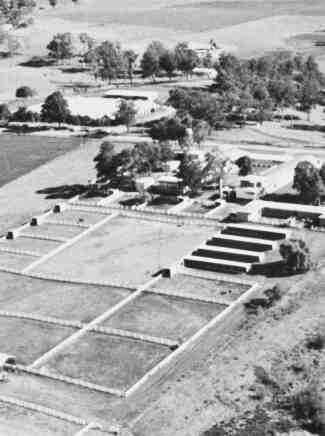
Reginald Montagu
Cairns
Gunn
is appointed Dean of The University of Sydney’s Faculty of Veterinary
Science
Having completed a Bachelor of Science in Agriculture in 1915, Rex Gunn served in World War I and graduated from The Royal (Dick) School of Veterinary Studies at The University of Edinburgh. He returned to The University of Sydney in 1921 as a Lecturer in veterinary anatomy and surgery
Well-known as a researcher, Gunn’s work on sheep fertility led to key developments in sheep husbandry, and he
Australian Veterinary Journal
After receiving a Doctor of Veterinary Science in 1935, he served as Dean of the Faculty in 1939. In 1948, he became Professor of Veterinary Science. Gunn’s second term as Dean lasted until he retired in 1958. Gunn was the 1926 President of the Veterinary Association of 1944 President of the Australian
the NSW Veterinary Surgeons Board from 1942 to 1950.
The University of land in Cobbitty near Camden
Financially supported by farm paved the way for farm animal teaching and the establishment of The University of Sydney’s Rural Veterinary Centre, the rural campus of the Faculty of Veterinary Science. As well as the JL Shute Teaching and Research Building and Rural Veterinary Centre, it is home to the Plant Breeding Institute, Horse Unit, Animal Reproduction centre and Corstorphine dairy farm.


1957 1955
Colin Charles Blumer becomes Chief of the NSW Department of Agriculture animal industry division
After graduating from The University of Sydney in 1924, Colin Blumer started at the NSW Department of Agriculture
While working as a District Veterinarian in Armidale, he played a key role in the
Shannon Vale Nutrition
aimed to improve sheep
From 1944 to 1948, he was and a District Veterinary
he served as Chairman of Blumer was Deputy of the
becoming Chief of the Division in 1955 until
John Walter Plant is awarded the first veterinary science scholarship from the NSW Pasture Protection Board
After John Plant graduated in veterinary science from The University of Sydney in 1962, he became the first trainee District Veterinarian under that system, and worked for six years in the Gundagai Pastures Protection Board.
In 1968, he joined the NSW Department of Agriculture as a Special Veterinary Research Officer at Glenfield Veterinary Research Station, working in sheep fertility. Recognised as an authority on sheep health, he published papers in journals here and overseas.
A supporter of the Australian Veterinary Association, Plant received a Meritorious Service Award in 1981 and was elected a Fellow in 1989.
From 1992 until 2000, he led research into flock health at the Elizabeth Macarthur Agricultural Institute facility at Menangle.
In 2007, he was awarded a Medal of the Order of Australia for service to veterinary science and the sheep industry

David Robert Hutchins becomes Superintendent of the Rural Veterinary Centre at Camden
Following his 1948 graduation from The University of Sydney, David Hutchins worked at the university’s McGarvie Smith veterinary clinic at Badgerys Creek and spearheaded the development of the Rural Veterinary Centre at Cobbitty When the centre opened in 1957, he was appointed established it as a centre of
and surgery
Hutchins was lauded for his clinical acumen and was made an Associate Professor in Veterinary Clinical Studies in 1970 – though he was already known to many as ‘The Prof’ – and designed and oversaw construction of the large-animal operating theatre complex that opened at Camden in 1982. In 2000, he was awarded a Medal of the Order of Australia
he received an Honorary Doctor of Veterinary Science from The University of Sydney in 2013.

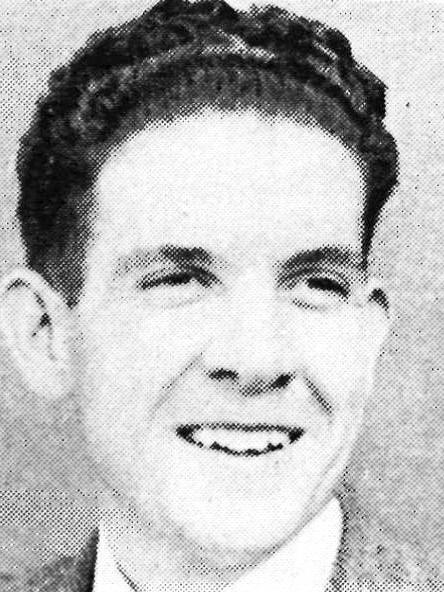
1958 1959
Nancy Wickham establishes the
private veterinary pathology lab
Following her graduation from The University of Sydney in 1944, Nancy Wickham stayed on at the Faculty of Veterinary Science as a Demonstrator and later a Lecturer in veterinary pathology
A highly competent laboratory diagnostician, she established the country’s first private veterinary pathology lab in Sydney and continued to provide a laboratory service until the late 1990s, despite competition from international and national
the 100 women awarded the Belle Bruce Reid Medal as an outstanding female veterinary science graduate, to mark the centenary of the registration of Australia’s
John Casserly Holt purchases St George Animal Hospital in Sydney
A 1955 graduate of The University of Sydney, John Holt spent his early career as a cattle vet before buying St George Animal Hospital (SGAH) and developing it into a cutting-edge and progressive companion animal practice.
Established at a time when small animal practice was still in its infancy, SGAH expanded to six practices and set many of the standards used today
An advocate for advanced veterinary medicine and surgery for small companion animals, he collaborated with like-minded colleagues in 1967 to co-found the Small Animal Clinicians Group, which later became the Australian Small Animal Veterinary (ASAV) group. He was editor of the organisation’s journal, the Australian Veterinary Practitioner, for many years.
Holt’s work is considered to have put small animal practice on the map. The Dr John Holt Scholarship for Animal Welfare was established in 2015 at The University of Sydney, and the ASAV presents the John Holt Distinguished Service Award.

Pericles Howard Manusu establishes the Gladesville Veterinary Hospital
After graduating from The University of Sydney in 1957, Perry Manusu established Gladesville Veterinary Hospital as a small animal practice that also specialised in zoo animals and Randwick racecourses, where he was the official veterinarian from 1957 to 1980.
In 1960, he started Troy Laboratories, the first veterinary pharmaceutical company in the Southern Hemisphere, which utilised Australian research in its veterinary pharmaceuticals. From 1960 to 1978, he was a part-time Lecturer and Examiner in surgical anatomy at The University of Sydney
Also in the 1960s, Manusu was instrumental in establishing sections of the Australian Veterinary Association, and was appointed the inaugural Member of the Australian College of Veterinary Scientists for service to the veterinary profession. In 1978, Manusu established the pioneering biotech company Gradipore alongside medical researcher Joel Margolis.
 David Hutchins at the Rural Veterinary Centre in the 1970s.
Image: The University of Sydney Archives
David Hutchins at the Rural Veterinary Centre in the 1970s.
Image: The University of Sydney Archives

University
of Sydney’s veterinary surgery in the 1960s. Image: The University of Sydney Archives
1 960s
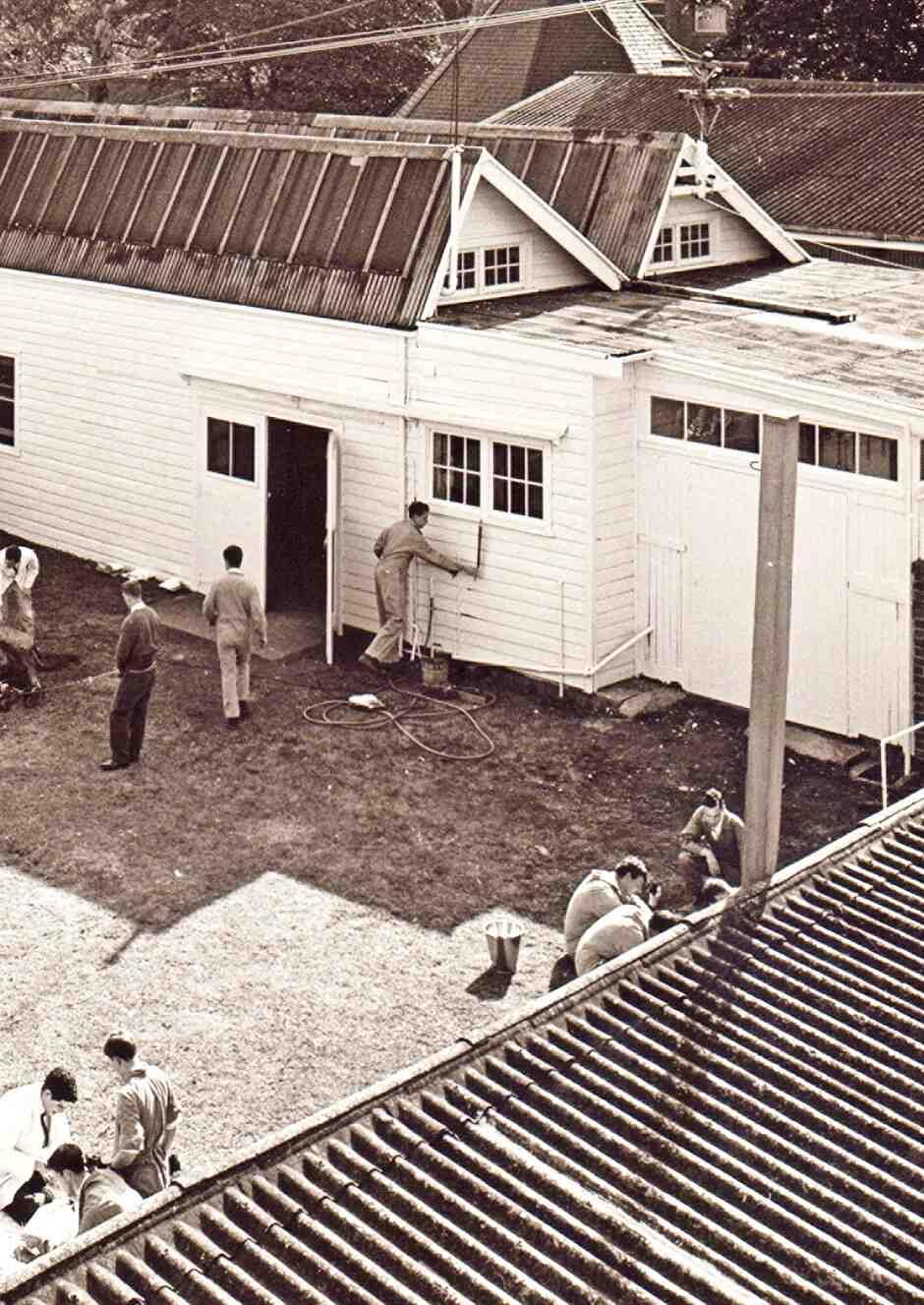
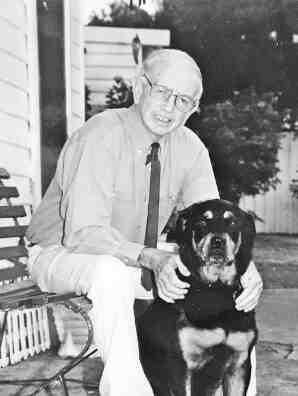


1960 1961
Russell Keith Dickens opens the Blacktown Veterinary Clinic
Having enrolled in dentistry at The University of Sydney, Russell Dickens changed to veterinary science and
Born and raised in Western Sydney, he operated an all-species practice from his family’s home at Westmead, before moving to a purposebuilt practice at Blacktown to service both farm and
Sydney’s wildlife parks, he started researching diseases in koala populations and in 1975 was awarded a Master
As well as being Mayor of Blacktown in 1987, he was a was awarded a Medal of the
He played a key role in establishing the Australian Koala Foundation, worked tirelessly in koala welfare, stray animal control and animal ethics, and continued practicing at his Blacktown
Jenifer Hedley Edols becomes the
AVA’s Divisional Committee in NSW
After graduating from The University of Sydney in 1949 and working overseas, Jenifer Edols worked in small-animal practice at the North Shore Veterinary
A stalwart of the Australian Veterinary Association, she was on the NSW Division’s committee until 1970 and served as its President from many AVA subcommittees and represented it on the
She was elected a Fellow in 1971, and sat on the national
As the Graduate Assistant for the Faculty of Veterinary Science from 1968, Edols went overseas to research
the 100 women awarded the Belle Bruce Reid Medal as an outstanding female veterinary science graduate, to mark the centenary of the registration of Australia’s
Grahame Edgar is appointed DirectorGeneral of the NSW Department of Agriculture
Following his graduation from The University of Sydney in 1924, Grahame Edgar worked as a junior veterinary officer for the NSW Department of Agriculture, before moving to the Glenfield Veterinary Research Station in 1927.
After travelling overseas to further his research of infections in sheep and cattle in 1946, he has promoted to Director of Veterinary Research in 1947.
In the 1950s, he played a key role in Australia’s rabbit control program and went to the UK to study foot-and-mouth disease.
After becoming the first veterinarian to be appointed Director-General of the NSW Department of Agriculture, he was awarded a Doctor of Veterinary Science from The University of Sydney in 1962.
In 1966, he was awarded the Farrer Memorial Medal for service to agricultural science, and an Order of the British
the Australian Veterinary Association’s Gilruth Prize for service to veterinary science.


1962

Victor Gordon Cole becomes President of the Australian Veterinary Association
Before enrolling in veterinary science in 1933, Victor Cole worked as a Technical Assistant to Ian Clunies Ross, the then parasitologist at the Council for Scientific and Industrial Research within The University of Sydney’s Veterinary School.
On graduating in 1936, Cole worked as a parasitologist in the Department of Agriculture in New Zealand before World War II. On his return to NSW, he became a Veterinary Officer for the Graziers Cooperative Shearing Co (Grazcos) in 1938, before moving to the Australian Wool Board from 1945 to 1946. He ran a private practice in Dubbo from 1947 to 1953 before returning to Grazcos.
A long-time supporter of the Australian Veterinary Association, he served as President from 1961 to 1962.
As well as being an external Examiner in parasitology at The University of Sydney, Cole was an Advisor to the McGarvie Smith Institute. In 1972, he was awarded the AVA’s Gilruth Prize for service to veterinary science.
Marshall John Edwards returns to The University of Sydney as a Lecturer in large animal medicine
After graduating from The University of Sydney in 1949, Marshall Edwards ran a large animal practice in Lismore and later in Western Australia, before moving to the UK to work while completing a Master
Following his return to The University of Sydney in 1962, he earned his PhD and was widely published for his research on the effects of maternal hyperthermia in gestation, which had a bigger impact in the medical
As well as being Dean of the university’s Faculty of Veterinary Science several times in his career, Edwards was also a Consultant to the and Australian Department for service to veterinary
Douglas Charles Blood helps to re-establish the veterinary school at The University of Melbourne
A graduate of The University of Sydney in 1942, Douglas Blood returned to the Faculty after the war to teach large
After moving to the US and Canada, he gained attention as an educator and pioneer in diagnosis and treatment
His 1960 book Veterinary Medicine: A Textbook of Diseases in Cattle, Sheep, Pigs and Horses
Professor of Veterinary Science and Dean of the re-established veterinary school at The University of Melbourne, which had closed
A Founding Fellow of the Australian College of Veterinary Scientists, he was in 1981; and the Australian Veterinary Association’s Gilruth Prize for service to


1962 1964
William John Hartley starts at The University of Sydney as Lecturer and researcher
A 1945 graduate of the Royal Veterinary College at The University of London, William Hartley worked as a pathologist at Wallaceville Animal Research Station in New Zealand before moving to The University of Sydney
His distinguished career included the establishment of the Australian pathology registries of wildlife diseases (now the Australian Registry of Wildlife Health at Taronga Zoo) and domestic animal diseases (now at the Elizabeth Macarthur
A consultant pathologist overseas, Hartley published more than 200 papers and in 1992 was recognised with
prestigious international award there is for veterinary was appointed a Member
for his service to veterinary pathology and investigation
Robert Vernon Stewart Bain is appointed Dean of The University of Sydney’s Faculty of Veterinary Science
A noted veterinary microbiologist researcher and educator, who graduated from The University of Sydney in 1937, Bob Bain served as Dean of the Faculty of Veterinary Science until 1969. He was renowned for his work in South-East Asia with the teams that eradicated foot-and-mouth disease from Indonesia and developing a vaccine for haemorrhagic septicaemia in cattle and buffalo in Sri Lanka and Thailand, which is still known in the area as ‘Bain’s vaccine’.
In 1980, his distinguished contributions to international veterinary science saw him named the inaugural recipient of the Kesteven Medal, which is jointly awarded by the Australian Veterinary Association and the Australian and New Zealand College of Veterinary Scientists. He was awarded an Honorary Doctor by The University of Sydney in 1986 for his service to education and his research in developing countries.
The University of Sydney establishes the Post Graduate Foundation in Veterinary Science
After identifying the need for continued education in the rapidly changing profession, a group of veterinarians with backgrounds in industry, academia and government founded the membership-
However, it wasn’t until veterinary innovator Thom a s Hungerford was appointed Technical Director in 1968, and then Director in 1974, that the PGFVSc began to
Renamed the Centre for Veterinary Education in 2008, the organisation has evolved to suit the needs of the profession and rapid
and seminars as well as workshops, and online and
Since Hungerford, the role of Director of the Centre for Veterinary Education has been filled by Douglas Bryden, William Howey, Michele
1965
Cotton, Hugh White
Bob Bain (far right) shaking hands with the Governor of NSW Sir Roden Cutler, alongside The University of Sydney’s vice-chancellor Sir Bruce Williams in 1970 Image: The University of Sydney Archives

1966
Clifford Harold Gallagher becomes The University of Sydney’s Professor of Veterinary Pathology
Following his graduation from The University of Sydney in 1952, Clifford Gallagher started working at the CSIRO McMaster Laboratory as a research officer specialising in the biochemical understanding of pathological processes.
He was awarded a CSIRO scholarship to study for his PhD at the Graham Research Laboratory of the University College London Medical School and went on to gain his Doctor of Veterinary Medicine from The University of Sydney in 1962.
Gallagher was chosen by the CSIRO to be Chief of its new Division of Biochemistry and Human Nutrition, but he instead took up The University of Sydney’s invitation to become its Professor of Veterinary Pathology. He was Dean of the Faculty from 1973 to 1979.
After retiring from the university in 1989, Gallagher was appointed Chief Consulting Scientist to the Zoological Parks Board of NSW and worked at Taronga Zoo.
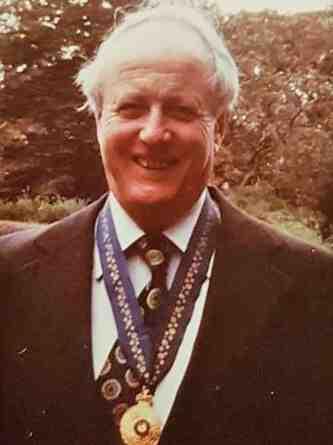

Roy Mervyn Watts becomes DirectorGeneral of the NSW Department of Agriculture
After graduating from The University of Sydney in 1937, Roy Watts joined the NSW Department of Agriculture and worked his way up the ranks to Director of Veterinary Research at Glenfield Veterinary Research Station. During his 14-year term as Director-General from 1966 to 1980, Watts expanded the department’s role in research, animal disease eradication, pesticide control and agricultural engineering. He also introduced the role of research scientist, allowing NSW to retain some of the profession’s brightest minds. Watts received numerous awards and honours during his career, including an inaugural Fellow of the Australian College of Veterinary Scientists in 1971, the Imperial Service Order in recognition of distinguished public service in 1974, and the Australian Veterinary Association’s Gilruth Prize for service to veterinary science in 1978. He was appointed an Officer of the Order of Australia for public service in 1980.
Ronald Henry John Hyne becomes President of the AVA in NSW
Following his graduation from The University of Sydney in 1956, Ronald Hyne became a Senior Lecturer at the university’s
As well as working with farm animals and wildlife, he had a special interest in zoo animals and was the Chief Veterinarian for the African Lion Safari wildlife
Hyne served as NSW President of the Australian Veterinary Association until 1968, and was awarded the Seddon Memorial Prize for meritorious contribution to veterinary science in NSW,
From 1975 to 1976, Hyne served as President of the AVA, during which he was a Founding Trustee of the AVA Veterinary Benevolent Fund, which continues to assist veterinary families faced with hardship and
branch of the AVA now has a Ron Hyne Award
1967
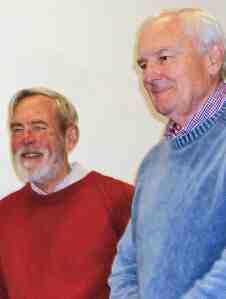

1969
Brian Robert Hope Farrow publishes in the Australian Veterinary Journal
Following his graduation from The University of Sydney in 1963, Brian Farrow (pictured right) worked in private practice for four years, then returned to the university to complete a PhD in Veterinary Pathology
A specialist in internal medicine and neurology, he spent five years in the US as Chair of Clinical Sciences at the Cornell University College of Veterinary Medicine from 1990, then worked at The University of Sydney as a Professor of Veterinary Medicine until his retirement in 2005.
Farrow published more than 100 scientific papers in the Australian Veterinary Journal, and his research led to early detection and prevention of naturally occurring genetic diseases in dogs.
Along with Associate Professor Andrew David John Watson (pictured left), a fellow graduate of The University of Sydney, Farrow was a pioneer in veterinary clinical reasoning and helped to develop the discipline of veterinary neurology in Australia.
A virology lab is established at the Glenfield Veterinary Research Station
Recognising the need for specialist facilities, the NSW Department of Agriculture opened the lab to research viral diseases affecting
supported by Geoffrey The laboratory – which was designed with a higher level of security to ensure the safe handling of viruses of increased virulence – carried out specialist diagnostic procedures on a large number of specimens and researched diseases such as pestivirus and
Following the laboratory’s transfer to the Elizabeth Macarthur Agricultural became Senior Principal Research Scientist and Leader of the Animal Virology Team, supported by Principal Veterinary Virologist Deborah Finlaison and Research Coordinator and Senior Veterinary

Daria Nina Love is the first woman to be awarded
The University of Sydney Medal for Veterinary Science
Following her University Medal for academic excellence, Daria Love also became the first woman a t the university to receive a PhD in Veterinary Science in
the first woman in Australia to be awarded a Doctor of Veterinary Science, all while working as an Associate
She received a Fellowship of the Royal College of Pathologists in 1991, and her work on bacterial and viral diseases of horses earned
Research and Development Corporation award for outstanding contributions
She was posthumously honoured as an outstanding female veterinary science gr a dua t e in 2006 with the Belle Bruce Reid Medal, t o mark the centenary of the registration of Australia’s
1968
The University of Sydney Veterinary Clinic and Hospital in the 1960s.
 Image: The University of Sydney Archives
Image: The University of Sydney Archives
 A veterinary conference at The University of Sydney in 1977. Image: The University of Sydney Archives
A veterinary conference at The University of Sydney in 1977. Image: The University of Sydney Archives
1 970s

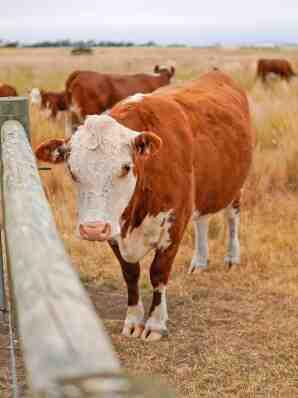

The
national brucellosis and tuberculosis eradication campaign
is formed
Protective measures against both diseases – incidents of which dated back to the 1920s – had come under voluntary state-based control programs prior to formation of the BTEC.
This coordinated national campaign saw state/territory and federal governments unite with the industry to eliminate both diseases from the cattle population – 180,000 herds at that time – to protect beef and dairy exports, diminish loss to the industry and eradicate zoonotic diseases.
The campaign included vaccination, testing and slaughter, as well as abattoir monitoring and serum and milk testing. Veterinarian and epidemiologist Dr Helen Scott Orr led the NSW program.
The introduction of tail tagging in 1970 was a major advance as it allowed cattle to be traced
sale or inspection at abattoirs.
Australia was declared free of bovine brucellosis in 1989 and bovine tuberculosis in 1997.
Bede Morris is appointed the in Australia
After graduating from The University of Sydney in 1952, Bede Morris started his career in research at the Kanematsu Memorial Institute of Pathology at Sydney Hospital.
After completing his PhD in the UK, Morris was appointed Senior Fellow in experimental pathology at the John Curtin School of Medical Research at Canberra’s Australian National University, in 1958. He became Professorial Fellow in 1963 then later Professor of Immunology.
With the merino sheep his experimental animal of choice, he studied the role played by lymphocytes in the development of immunity, on which he published many articles.
Elected a Fellow of the Australian Academy of Science in 1969, he later served as Vice-President and Treasurer
Following his death in a car accident in 1988, The University of Sydney named its clinical immunology refresher course for veterinarians – which he had helped to initiate in 1978 – in his honour in 1989.

1971
Pearson oversees veterinary product research for the Applied Rural Research group
Following his graduation from The University of
Pearson spent seven years at the NSW Department of Agriculture’s Glenfield
its McMaster Laboratory, he worked with parasitologists Hugh Gordon and Joseph
the veterinary chemicals industry, initially with the pharmaceutical company Parke-Davis, then Merck Sharp & Dohme at its Applied Rural Research group in Armidale, where he was responsible for new
He was elected a Fellow of the Australian Veterinary Association in 1977, having helped establish its first special interest group and served as the Foundation President of the Association
Seiji Seiji/Unsplash 1970


1972
The
Australian
College of Veterinary Scientists is established
The idea for a membershipbased, not-for-profit group originated in the 1950s and was driven by the Australian
Born from an industry need for post-graduate was founded in 1971 with
judged to have a high level of proficiency and at least
as a specialist in all states and territories; membership is a n off ic ia l recognition of a practitioner ’s k nowle dge and experience in their
New Zealand to its title and
veterinary education through academic and non-academic awards, and showcases the work of its members, fellows and 29 chapters as well as international guests at its
Alexander Kirk Lascelles becomes the Chief of Animal
Known for his work on immunity to mastitis, immunologist and physiologist Alexander “Alick” Lascelles graduated from The University of Sydney in 1953 and stayed on as a researcher and Lecturer in the Department of Veterinary Physiology
After obtaining a Master of Veterinary Science, Lascelles took up a position of Research Fellow at Canberra’s Australian National University in 1959, and completed a PhD there in 1962. He returned to The University of Sydney and was appointed Professor of Dairying in 1964, where he led research projects into the role of colostrum in calf immunity that impacted calving practices in Australia. He also oversaw the Dairy Unit at Camden becoming the only major dairy husbandry unit at any university in the country
As the Chief of Animal Health at the CSIRO until 1982, he did much to progress research into poultry, as well as immunology and molecular biology. He then returned to full-time research at its McMaster Laboratory at Glebe before retiring in 1989.

The eradication in Australia of bovine pleuropneumonia
A 1924 graduate of The University of Sydney, Alfred Lionel Rose (pictured) was already known in NSW for his work helping to control serious livestock diseases when he became Chief
While contagious bovine pleuropneumonia had been eradicated from NSW by 1945, it was still rampant in research laboratory to focus on its eradication, and his successful strategies were adopted by Commonwealth and State governments for the 1959 national program that eventually saw Australia
The disease had prevented the export of live cattle from Australia for over a century and its eradication enabled new export opportunities, as well as sparing many cattle from a very painful
primary industry, Rose was appointed a Member of the

1974
The Australian and state governments initiate programs supporting the eradication of footand-mouth disease in South-East Asia
Protecting Australia from foot-and-mouth disease infections arriving from neighbouring countries has led to local veterinary scientists working in developing countries on animal health research and development aid projects aimed at the prevention, management and control of FMD.
Starting in 1974 in Bali, this campaign’s success led to projects in other South-East Asian countries, often with international bodies such as the World Organisation for Animal Health and the Food and Agriculture Organization of the United Nations, Early projects were led by The University of Sydney’s Associate Professor Bob Bain, and Robert Gee, Director of Quarantine and later Director of the Australian Bureau of Animal Health. Key contributions have been made in recent years by Helen Scott Orr and Peter Windsor
The Australian Bureau of Animal Health is established
Created to centralise the provision of animal health across the country, the Australian Bureau of Animal Health became Australia’s coordinating body for veterinary matters and permitted a national approach to disease epidemiology and control.
This national reach meant that it assumed coordination of the newly created national brucellosis and tuberculosis eradication programs, which ran from 1970 to 1997.
Led by Robert Gee (pictured right), the bureau sat within the Australian Government’s Department of Agriculture, Fisheries and Forestry.
The bureau’s wordy official mandate stated its purpose as ‘the eradication and control of major endemic and exotic animal diseases by working closely with the Australian Veterinary Association, CSIRO and state and territory departments of agriculture’.
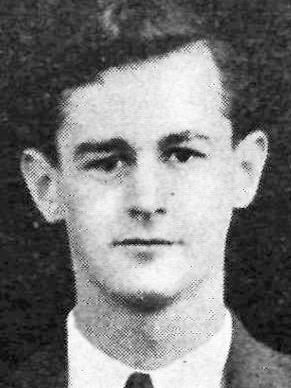
Robert
William Gee is named the Australian Bureau of Animal Health’s inaugural Director
A 1950 graduate of The University of Sydney, Robert “Bill” Gee was in charge
the Department of Health in Canberra before he joined the Australian Bureau of Animal Health and played a key role in eradication programs against pleuropneumonia, tuberculosis and brucellosis in cattle.
In 1982, he became the first person from the Southern Hemisphere to be appointed President of the Office Internationale des Epizooties, the world-coordinating body for disease control (it changed its name in 2003 to the World Organisation for Animal Health).
Gee was elected a Fellow of the Australian Veterinary Association, and awarded the AVA’s 1997 Gilruth Prize for meritorious service to veterinary science. The same year, he received an Honorary Doctor of Veterinary Science from The University of Sydney. In 2000, he was appointed a Member of the Order of Australia for service to veterinary science.
Shutterstock

1975
Garth Alexander McGilvray helps establish the NSW North Coast Branch of the Australian Veterinary Association
After graduating from The University of Sydney in 1968, Garth McGilvray established a mixed veterinary practice at
A long-time supporter of the Australian Veterinary Association, he became Director of the NSW North Coast Branch and later
served as President of the Veterinary Practitioners Board of NSW, as well as Chairman of the Australasian of Australia for service to the community and the
McGilvray has been a Trustee of the Australian Companion Animal Health Foundation since 1997, and the Chairman of veterinary wholesale company Provet

1977
Peter James Mylrea becomes Director of Veterinary Research at the Research Station
A 1952 graduate of The University of Sydney, Peter Mylrea spent his early career as a District Veterinarian in regional NSW towns such as Goulburn, Nowra and Lismore.
Following his time as Director at Glenfield from 1977 to 1984, he was appointed Chief of the Division of Animal Health at the NSW Department of Agriculture, a role in which he stayed until his retirement in 1988.
As well as a Master of Veterinary Science from The University of Queensland, Mylrea completed a PhD at The University of Sydney
In 2010, he was awarded a Medal of the Order of Australia for service to the community, particularly through his postretirement work in the areas of volunteer community work, for the Camden Historical Society and veterinary history

Edward John McBarron publishes his seminal book on plant poisons
After graduating from The University of Sydney in 1942, Edward McBarron worked as a Stock Inspector at Holbrook and later at Albury. In 1953, he transferred to the Glenfield Veterinary Research Station as a Veterinary Research Officer, and worked there in senior positions until his retirement.
He wrote three books on plant poisonings in domestic animals, as well as many papers. After it was published in 1977 by the NSW Department of Agriculture, his book Medical and Veterinary Aspects of Plant Poisons in New South Wales became a key resource for many rural practitioners. It was followed by Poisonous Plants in 1991.
McBarron was also a noted botanist and amassed a private herbarium of over 15,000 plant specimens that he later gifted to the National Herbarium. An avid historian, he wrote extensively about the veterinary profession. In 1992, he was awarded the Medal of the Order of Australia for service to conservation, the environment and systematic botany.

1977
Western Plains Zoo opens thanks to the vision of David Richard Butcher
Following his graduation from The University of Sydney in 1965, David Butcher became a renowned zoo veterinarian, conservationist and animal welfare advocate.
His vision of a zoo where animals could be seen in their natural habitat led to the design of Taronga Western Plains Zoo on the site of an old army camp at Dubbo. It was the first zoo in Australia to be constructed on the open-range principle – and the first to be built in this country in 60 years.
Having opened with 35 different animals from six countries, today it boasts more than 1000 different animals from five continents.
As well as serving as Chief Executive of the World Wide Fund for Nature Australia, Greening Australia and the RSPCA (NSW) during his career, Butcher jointly owned and ran Boundary Road Veterinary Hospital and the connected Bankstown Veterinary Hospital in the 1990s and early 2000s.

1979
John
Ross
Egerton becomes Dean of The University of Sydney’s Faculty of Veterinary Science
John Egerton (pictured left) was already a gifted researcher when he joined the Faculty as a Professor
As well as serving as Dean until 1982, E ge r t on made major contributions to the understanding of microbial diseases in livestock here and overseas, particularly with his published work, for which he obtained a Doctor of Veterinary Science from The University of Sydney
the Kesteven Medal for his distinguished contributions to international veterinary science from the Australian Veterinary Association and Australian and New Zealand College of Veterinary
appointed a Member of service to the livestock industry, particularly in the eradication of microbial
POCTAA (the NSW Prevention of Cruelty to Animals Act 1979) comes into force
The objectives of this groundbreaking Act were to prevent cruelty to animals, promote their welfare by
of an animal to provide care for them, and to treat the animal in a humane manner, and to ensure the welfare
Today, RSPCA NSW powers to enforce POCTAA through being recognised as special constables by an
Police Offences Act 1901 Amendments made to the Act in 2022 prevent people who are convicted of serious cruelty offences from owning animals or working for a business that
(above left) Egerton with John Keep, then Superintendent of The University of Sydney’s Veterinary Teaching Hospital in 1986. Image: The University of Sydney Archives
 Taronga Western Plains Zoo at Dubbo. Image: Destination NSW
Taronga Western Plains Zoo at Dubbo. Image: Destination NSW
 Veterinary students working on a dog at the veterinary hospital in 1986.
Image: The University of Sydney Archives
Veterinary students working on a dog at the veterinary hospital in 1986.
Image: The University of Sydney Archives

1 980s
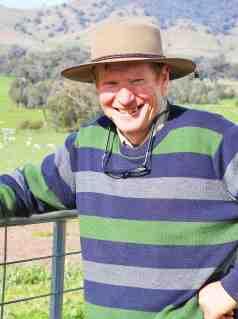

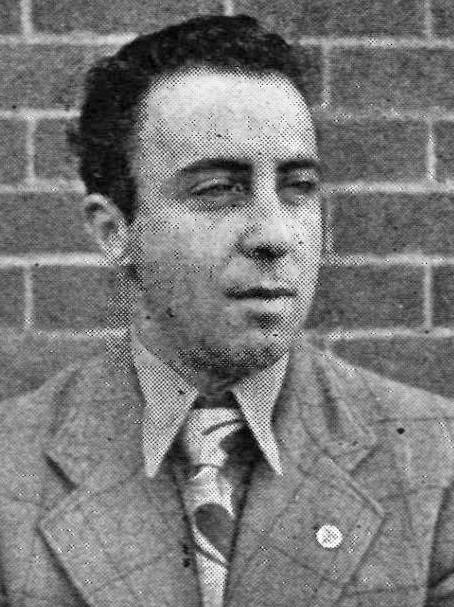
1980 1982
Australia’s first diagnosed case
Disease is recorded near Bathurst
The wasting disease has since spread through NSW and is moving north It is also in cattle, goats, deer and camelids.
Animal Health Australia runs the National Johne’s Disease Project, a cooperative initiative of the Australian livestock industries, state and federal governments and veterinarians.
Notable contributors in NSW include sheep specialist Bruce Allworth (pictured), the NJDP coordinator from 1997 to 2003. Now a Professor of Livestock Systems at the School of Agricultural, Environmental and Veterinary Sciences at Charles Sturt University, he co-founded the Fred Morley Centre there for teaching and on-farm research.
Pathobiologist Richard Whittington has also done much to further the understanding of JD (paratuberculosis). As the Chair of Farm Animal Health at The University of Sydney, he led major research programs and he is now on the board of the International Association for Paratuberculosis, set up in 1989 to work towards its eradication.
Rex Milton the inaugural Angus Chevalier Award
After his graduation from The University of Sydney in 1950, Rex Butterfield’s research work led to him obtaining a Master of Veterinary Science in 1961, and a PhD in 1963.
He was Chair of Veterinary Anatomy at The University of Sydney’s Faculty of Veterinary Science from 1966 until he retired, and served as Dean of the Faculty from 1970 to 1973. A Foundation Fellow and President of the Australian and New Zealand College of Veterinary Scientists, he was also Convener of the Committee on Ethics of the Australian Veterinary Association.
Butterfield’s research into meat-producing animals led to key industry advances, and the Angus Chevalier Award for outstanding achievement for the rural industry of Australia was one of his many honours.
On retiring in 1986, he served as Chairman of the government advisory National Consultative Committee on Animal Welfare. In 1966, Butterfield received an Honorary Doctor of Science from The University of Sydney
Harold Roger Spira publishes his dog breed reference book Canine Terminology
Following his graduation from The University of Sydney in 1949, Harold Spira became a pioneer in the development of dog breeding programs that used frozen semen and
A well-respected dog show judge, he was the first Australian appointed to judge the coveted Best in Show award at the Crufts
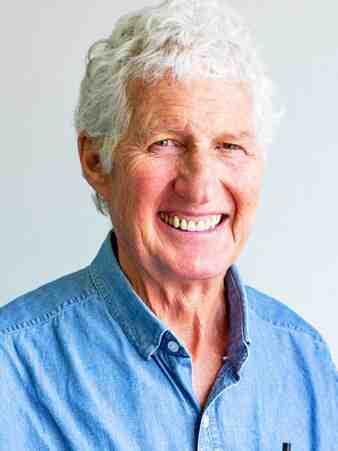


1984 1985
Jeffrey Samuel Smith becomes a Fellow of the Australian and New Zealand College of Veterinary Scientists
After graduating from The University of Sydney in 1971, Jeffrey Smith completed a residency in veterinary and comparative ophthalmology at Cornell University in the US, and was granted Diplomate status of the American College of Veterinary Ophthalmologists.
After returning to Australia in 1978, he became a Member of the Australian and New Zealand College of Veterinary Scientists and then a Fellow in Veterinary Ophthalmology in 1983.
In 1982, Smith established the Eye Clinic for Animals in Sydney, which is now the oldest continually operating veterinary ophthalmology practice in Australia.
As well as serving as Vice President and President of the Australian Veterinary Association’s NSW division, he is widely published and has lectured in ophthalmic medicine, surgery and pathology at The University of Sydney
Peter Colin Gibbs
Veterinary Hospital
Following his graduation from The University of took over ownership of Yass Veterinary Hospital had run it as a primarily large animal practice since Gibbs established an additional small clinic in
Along with practice partner Stuart Williams, he opened a new purpose-built Yass Veterinary Hospital in 1996, before Williams took over
A long-term Member of the Australian Veterinary Association, in both the national and NSW branches, Gibbs was awarded the AVA’s Seddon Memorial Prize for meritorious contribution to veterinary
Chair of the Australasian Veterinary Boards Council, Gibbs is a Member of the Veterinary Practitioners Board for the ACT, and continues to mentor
Glenn Michael Shea starts teaching at The University of Sydney
After graduating from The University of Sydney in 1983, Glenn Shea returned a few years later to teach and went on to complete a PhD in 1992. A gifted educator, veterinary anatomist and herpetologist, he has dedicated much of his personal and professional life to documenting and conserving Australasian reptiles and amphibians, particularly the skink, pygopod lizards and typhlopid snakes.
He has identified numerous new species, some of which bear his name, including Nephrurus sheai, the Northern prickly knob-tailed gecko.
As well as being a long-term academic at The University of Sydney, he is an Honorary Research Associate at the Australian Museum and Queensland Museum.
Shea has written more than 190 papers and co-authored several books, including Action Plan for Australian Lizards and Snakes 2017. Published by the CSIRO, it offers conservation measures to help preserve herpetological species.
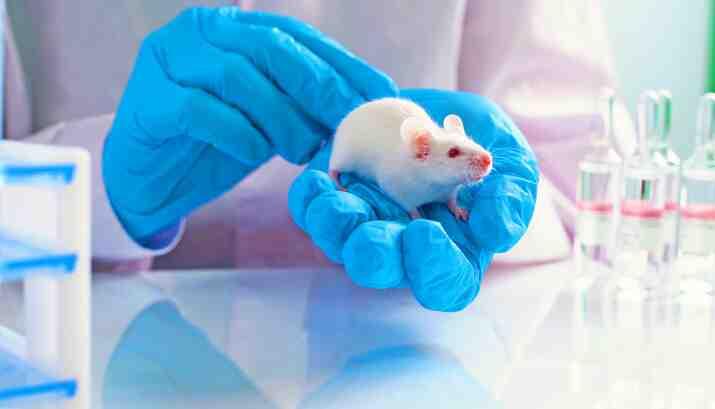
1985
The NSW Animal Research Act 1985 comes into force
The Act was introduced to ensure that whenever animals are used for teaching or research, it is justified, humane and considerate of the animal’s needs, and is in line with the 3Rs: replacement, reduction and refinement.
The Act is underpinned by the Code for the Care and Use of Animals for Scientific Purposes, which covers the use of animals in all primary or secondary schools, government or non-government.
Under the Act, any person or organisation conducting animal
a ‘certificate of accreditation’.
It also stipulates that any person or organisation must have an ‘Animal Suppliers Licence’ to provide animals for the purposes of research.
Animal Care and Ethics Committees were established for the approval of all projects involving the care and use of animals for scientific purposes.
The Veterinary Surgeons Act 1986 is passed
Act and reconstituted the Board and associated bodies (the Veterinary
Committee and the Veterinary Surgeons
The Board of Veterinary Surgeons of NSW consisted of six registered veterinary surgeons appointed by the Governor: three were nominated by the NSW Division of the Australian Veterinary Association; two were nominated by the Minister; and one was nominated by the Minister, from a Faculty of Veterinary Science panel selected by
The Board was tasked with overseeing registration of veterinary surgeons practising in NSW; licensing of veterinary premises; and regulation of conduct and standards of practice by
The Act also provided for categories of registration: on an honorary basis; as a specialist; and limited
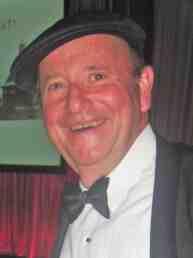
Harold Leonard Cooper becomes known as a TV vet
After graduating from The University of Sydney in 1966, Harry Cooper worked at Gladesville Veterinary Hospital before establishing his practice in Sydney, with a special interest in birds
The first of the television and media veterinarians in Australia, he became wellknown for his appearances on Burke’s Backyard went on to host his own series, Talk To The Animals Harry’s Practice in 1997, before joining Better Homes And Gardens
Australia for service to veterinary science and animal welfare, and as
Many media veterinarians have continued to highlight the profession in the eyes of the public, including Robert Zammit, Michael Archinal aka ‘Dr Ark’, Katrina Warren, Chris Brown, Simone Maher, and co-hosts James Carroll
Shutterstock
1986


1987
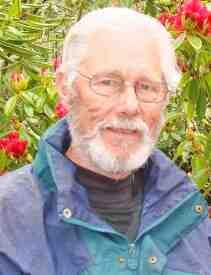
Women make up more than half of all graduates from The University of Sydney’s
Faculty of Veterinary Science
Female graduates from The University of Sydney’s Faculty of Veterinary Science exceeded 50 per cent in 1986 and that has continued to grow to
Worldwide, women now make up 70-80 per cent of graduates from most veterinary schools in
John Douglas Kelly becomes Chief Executive and Western Plains Zoos
Following his graduation in 1968, John Kelly established an early career as a veterinary parasitologist at The University of Sydney and was awarded a PhD for his research work.
Before he left the university in 1979, he served as Associate Professor in Veterinary Pathology, authored more than 100 papers and became an international authority of parasitology and immunology
As Chief Executive Officer of the Taronga Zoo Sydney and Western Plains Zoo at Dubbo, he led collaborative projects between The University of Sydney and the Zoological Parks Board of NSW for the conservation of rare and endangered species.
He was appointed a Member of the Order of Australia in 1995 for service to conservation and the environment, particularly in the field of wildlife preservation and to zoo administration. In 1996, he received an Honorary Doctor of Veterinary Science from The University of Sydney
becomes Director of The University of Sydney’s Post Graduate Foundation in Veterinary Science
A 1964 graduate of The University of Sydney, Douglas Bryden was well-known as a veterinary practitioner in the Tamworth region for more than 25 years.
He served as Director of the Post Graduate Foundation in Veterinary Science (now known as the Centre for Veterinary Education) until 1999. In 2004, he became a Consultant to Charles Sturt University on the establishment of its veterinary school at Wagga Wagga, the first veterinary science program set up in regional Australia.
A supporter of the Australian Veterinary Association, Bryden received the Meritorious Service Award in 1988 and the Gilruth Prize for outstanding service to veterinary science in 1994.
He was appointed a Member of the Order of Australia in 2001 for service to veterinary science in continuing education and clinical practice through the Post Graduate Foundation.
The University of Sydney Archives

1989
Richard Andrew LeCouteur opens a specialist practice in neurology and neurosurgery
After graduating from The University of Sydney in 1975, Richard LeCouteur worked in private small animal practice in Sydney before moving to Canada
After obtaining his American Boards in Veterinary Neurology and Neurosurgery, he worked at the College of Veterinary Medicine at Colorado State University from 1984 to 1989, and obtained a PhD in 1989, he ran a specialist practice in neurology and LeCouteur returned to the US to work at the School of Veterinary Medicine at the University of California,
The author of numerous articles throughout his career, LeCouteur obtained a Doctor of Veterinary Science for his published work from The University

The Rural Lands protection Act 1989 is passed
The purpose of this Act was to consolidate and update the provisions of the Pastures Protection Act 1934, the Registration of Stock Brands Act 1921 and the Noxious Insects Act 1934
The 1989 Act provided for the constitution of rural lands protection districts (formerly
establishment of rural lands protection boards and for existing pastures protection boards to become rural lands
The appointment of District Veterinarians was clearly from 1990, the title of ‘District Veterinarian’ replaced the which had been used since 1958; prior to that they were
District Veterinarians, plus a Team Leader for Animal Health, Biosecurity and
The Act also made provision for animal health issues and rationalised the
David Maunsell/Unsplash
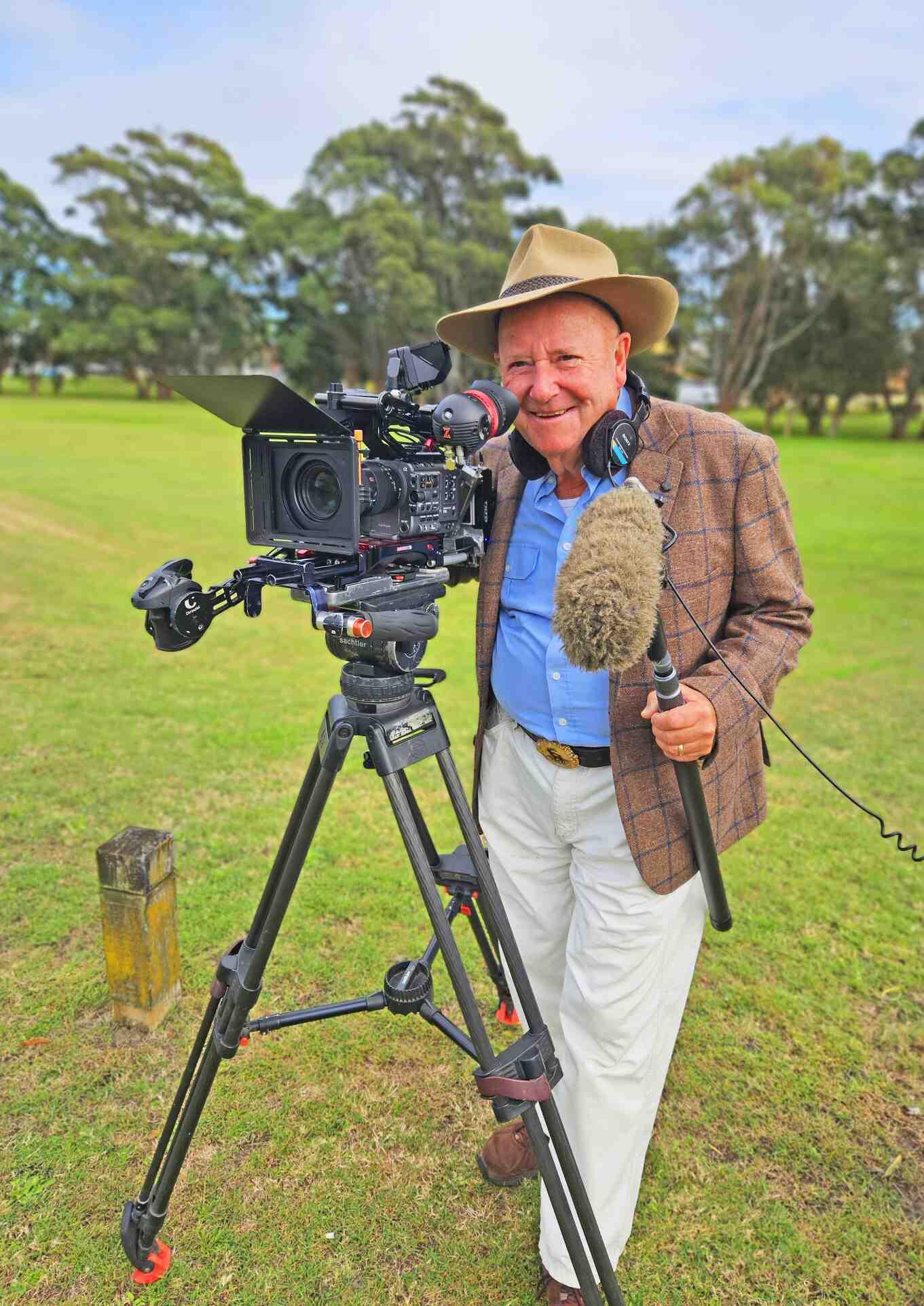 Dr Harry Cooper behind the scenes
Dr Harry Cooper behind the scenes
 Elizabeth Macarthur Agricultural Institute. Image: NSW Department of Primary Industries
Elizabeth Macarthur Agricultural Institute. Image: NSW Department of Primary Industries
1 990s


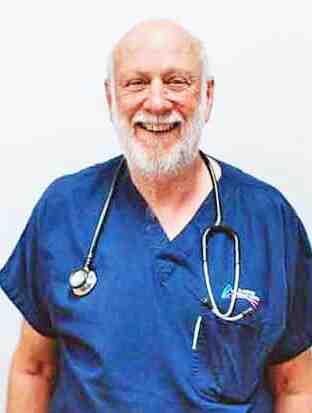

1990 1992 1991
The Elizabeth Macarthur Agricultural opens at Menangle
Run by the NSW Department of Primary Industries, the Elizabeth Macarthur Agricultural Institute is a world-renowned biosecurity centre that serves to protect Australia’s industry, environment and community
The front-line facility is part of the state response to emergency disease events and pest incursions, and its staff of senior scientists, postdoctoral scientists and students work on research and diagnostics of existing and emerging diseases.
The institute also includes education, farming and community facilities and specialised lab services.
As a result of the EMAI being established, the Glenfield Veterinary Research Station was officially closed in the early 1990s. It also led to the gradual contraction and closure of all four regional NSW veterinary laboratories: the Armidale and and Wollongbar and Orange labs in 2009. The EMAI now services all of NSW.
Richard Maxwell Zuber opens the
nuclear medicine small animal facility in the Southern Hemisphere
After graduating from The University of Sydney in 1969, Max Zuber joined Gladesville Veterinary Hospital, where he later opened a diagnostic
As well as working at the university’s Veterinary Teaching Hospitals and Clinical Skills Centre, he was on The Veterinary Schools Accreditation Advisory
a Fellow of the Australian and New Zealand College of Veterinary Scientists; he also served as President of the Australian College
Seddon Prize for clinical contributions to veterinary science from the Australian was appointed a Member 2021 for service to veterinary
Enid Grace Coupe starts as manager of the Walgett Veterinary Clinic in Lightning Ridge
Within a year of graduating from The University of Queensland in 1991, Enid Coupe had moved to the veterinary clinic at Walgett in northern NSW and began working in the communities between there and Lightning Ridge.
She continued working in the region for the next 25 years – 20 of which were as the sole practitioner – while raising a family, before closing the clinic in 2016.
Still registered as a veterinary practitioner, Coupe now works in the agricultural industry based around Walgett.
In 2006, she was among the 100 women awarded the Belle Bruce Reid Medal as an outstanding female veterinary science graduate, to mark the centenary of the registration of Australia’s first woman in 1906.
NSW Department of Primary Industries
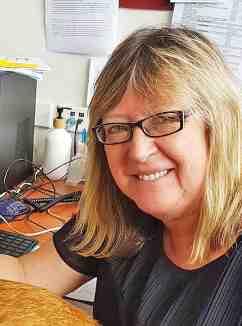


Kersti Seksel establishes the Sydney Animal Behaviour Service practice in Sydney
Since graduating from The University of Sydney in 1978, Kersti Seksel has been an advocate of animal wellbeing, promoting animal welfare and behaviour through her specialist practice in Sydney
In addition to running training programs at veterinary schools across Australia, she regularly presents on radio and TV on pet care and behaviour. She created Puppy Preschool and Kitten Kindy to socialise young animals and teach owners how to raise a well-adjusted pet.
She has served as President of the Australian Veterinary Association as well as Chair of the NSW Animal Welfare Advisory Council.
In 2021, she received the Gilruth Prize from the AVA for meritorious service to veterinary science.
In 2006, she was among the 100 women awarded the Belle Bruce Reid Medal as an outstanding female veterinary science graduate, to mark the centenary of the registration of Australia’s first woman in 1906.
David Ross Fraser is appointed the
of The University of Sydney’s Faculty of Veterinary Science
Following his graduation from The University of
became a noted researcher on vitamin D metabolism while at the University of Cambridge and the Medical
Returning to The University of Sydney in 1986, he served as the first Executive Dean of the Faculty of Veterinary
the Meritorious Service Award from the Australian
was appointed a Member
2015 for service to tertiary science education, as an academic and researcher, and to the study of human disease and domestic
After retiring in 2007, Fraser became Emeritus Professor at The University of Sydney, and continues to
Hendra virus is diagnosed
Since the first infection was identified at a racing stable in the Brisbane suburb of Hendra, more than 100 horses have been infected with the zoonotic virus HeV, which is transmitted by flying foxes and is a notifiable
The first case diagnosed in NSW was in 2006 at Murwillumbah; several sites on the north coast of NSW (including Lismore, Casino, Macksville, Mullumbimby and Tweed Heads) have
two cases confirmed in Seven people have contracted the virus from infected horses, five of whom were veterinary
Tragically, four of the Veterinarians examine a horse for suspected Hendra virus infection on the north coast of NSW in the late 2000s. Image: Kim Honan/ABC
1994
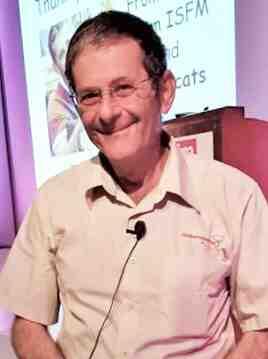
19 95
Richard Malik becomes Senior Lecturer in Feline Medicine at The University of Sydney Cat Centre
Since graduating from The University of Sydney in 1981, Richard Malik has become a world authority and educator in feline medicine, and fungal and mycobacterial diseases.
After completing a PhD at the Australian National University’s John Curtin School of Medical Research, he returned to The University of Sydney in 1987 as its first Resident in Small Animal Medicine. He was Senior Lecturer in Feline Medicine at the Valentine Charlton Cat Centre from 1995 to 2002. Malik has been involved in many collaborative research projects, mentored general practitioners and emerging specialists, and received international and national awards, including the Ian Clunies Ross Memorial Prize for outstanding contribution to veterinary science in both 1990 and 2023 from the Australian and New Zealand College of Veterinary Scientists.
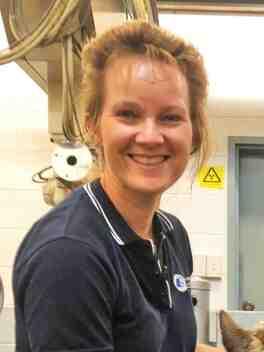

19 96
Mary-Jane Stutsel starts practicing in Cobar and soon after in Bourke
After graduating from The University of Queensland in 1994, Mary-Jane Stutsel worked for the RSPCA in Broken Hill, then took over the practice at Cobar and shortly after opened a clinic 160km away at Bourke.
After having a veterinary assistant for the first four years, she spent 20 years as sole practitioner for both towns while raising a family, most weeks travelling more than 1000 km on dirt roads.
Stutsel obtained a Master in Veterinary Studies as well as Membership of the Australian and New Zealand College of Veterinary Scientists in small animal surgery
After moving to Sydney to continue her children’s education, she gained ANZCVS Membership in
In 2006, she was among the 100 women awarded the Belle Bruce Reid Medal as an outstanding female veterinary science graduate, to mark the centenary of the registration of Australia’s first woman in 1906.
Paul Damien McGreevy joins the Faculty of Veterinary Science at The University of Sydney
Paul McGreevy is an internationally acclaimed animal behaviourist and been Professor of Animal Behaviour and Animal Welfare Science at both the Veterinary School at The University of Sydney and the
The author of more than papers, he co-founded the
the VetCompass Australia initiative uniting veterinary schools to provide national disease surveillance for companion animals and
portal and works closely
He has received many awards during his career, including the prestigious Global Animal Welfare Award from the World Veterinary

1997
Dr Francis Richard Doughty facilitates a health service to support members of the profession
Following his graduation from The University of Sydney in 1962, Frank Doughty became a strong supporter of the Australian Veterinary Association and an advocate for mental health support for the veterinary profession.
On behalf of the Veterinary Surgeons Board NSW (now the Veterinary Practitioners Board of NSW), he facilitated an arrangement with the Doctors’ Health Advisory Service (now Doctors’ Health NSW) in 1997, to provide health-related assistance to all veterinary professionals in NSW.
He received the Meritorious Service Award from the AVA in 1998, in recognition of his long service. In 2003, he was elected a Trustee of the McGarvie Smith Institute. He was awarded a Medal of the Order of Australia in 2024 for service to veterinary science and to the community Today, mental health issues in the veterinary profession are well supported by the Veterinary Practitioners Board of NSW, the AVA and veterinary schools.
An
outbreak of highly pathogenic is reported in Tamworth
While the H5N1 strain of highly pathogenic avian influenza (HPAI) has never been reported in Australia, there have been five outbreaks of other strains in commercial bird flocks, all of which were successfully eradicated.
Following confirmation of the outbreak of virulent avian influenza in Tamworth, Commonwealth and State Chief Veterinary Officers agreed that an eradication response strategy would be implemented in accordance with the national Australian Veterinary Emergency Plan (AUSVETPLAN).
As the lead agency, NSW Agriculture coordinated the operations with the assistance of the Rural Lands Protection Boards as well as local emergency organisations.

Reuben Johnston Rose starts as Dean of The University of Sydney’s Faculty of Veterinary Science
Noted equine researcher and educator Reuben Rose graduated from The University of Sydney in 1972 and worked in equine and mixed veterinary practice before returning to complete a PhD. In 1989, he became a Professor in Veterinary Clinical Studies. During his time as Dean until 2003, Rose oversaw the introduction of a new curriculum and the Faculty’s transformation in structure and educational standing.
From 2003 to 2006, he served as General Manager of Livestock Production Innovation at Meat & Livestock Australia.
As well as publishing an extensive body of work, Rose has been involved in veterinary accreditation and received a Fellowship of the Royal College of Veterinary Surgeons. He is now Emeritus Professor of Veterinary Science at The University of Sydney
1998

19 98
The Rural Lands Protection Act 1998 comes into effect
The Act established livestock health and pest districts that had been known as Rural Lands
However, it wasn’t until the Rural Lands Protection Amendment Bill 2008 that the Livestock Health and Protection Authorities and governing State Council name changes came into changed to Local Land Services after the Local Lands Services Act 2013
The Boards are involved in a wide range of functions in animal health, stock identification, management of pest animals and pest insects, and management of travelling stock routes, stock watering places and an important role in natural disaster relief and
The Companion Animals Act 1998 comes into force
This Act provided for the compulsory identification (microchipping) and registration of companion animals and detailed the responsibilities of owners of cats and dogs, including when dangerous dogs are involved.
The Australasian Veterinary Boards Council is incorporated in Victoria
The AVBC was incorporated by agreement of the State and Territory veterinary boards of Australia and the Veterinary Council of New Zealand.
Driven by the devolution of the National Veterinary Examination from the federal government to the Boards, it created a central entity for assessment of veterinarians wishing to migrate to Australia, with the authority to speak and act on behalf of all registering authorities.
The AVBC offers a forum for discussion and co-operation, of veterinary services and standardises education via accreditation of veterinary schools, the Australasian Veterinary Examination, for migration and assessment
Chloe Short/Unsplash
1999
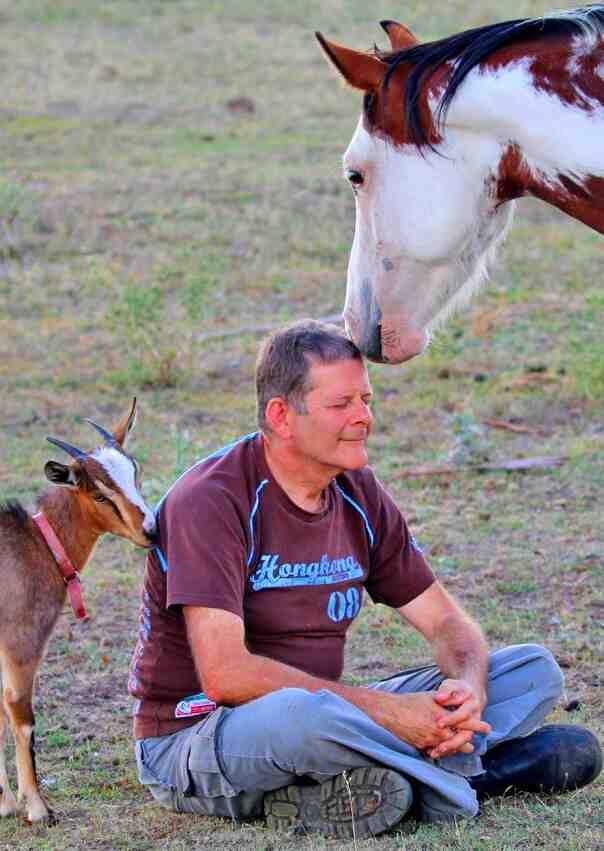 Richard Malik with some four-legged friends
Richard Malik with some four-legged friends
 Taronga Zoo Sydney Image: Destination NSW
Taronga Zoo Sydney Image: Destination NSW
2000s

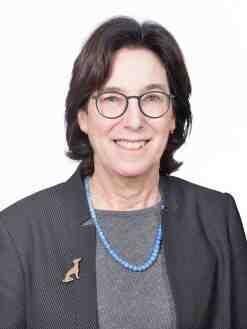
2000
Julia Rosemary Crawford takes over ownership of Bondi Junction Veterinary Hospital
After graduating from The University of Sydney in 1980, Julia Crawford started at Bondi Junction before eventually taking
A long-time Member of the Australian Veterinary Association, she served as National President from 2019 to 2020, during which she led both its national bushfire
While on the AVA Board from 2015 to 2021, she also served as President of the
the AVA’s Meritorious Service Award in recognition of her
Crawford is passionate about small animal general practice, with a special interest in soft tissue surgery, behavioural medicine, exotics and radiology, and continues to mentor veterinary students, veterinary nurses, and new


Robert MacLean Kibble is named NSW Professional of the Year by the Australian Council of Professions in recognition of his outstanding services to the community
A 1962 graduate of The University of Sydney, Bob Kibble established Sydney’s Fox Valley Animal Hospital in the 1980s and was one of the first veterinarians in the city to practice emergency care for wildlife through the
A long-time supporter of the Australian Veterinary Association, he was National President from 1990 to 1991, received the Meritorious Service Award in recognition of his long service in 1988, and was elected a Fellow in
representative of the AVA’s Veterinary Benevolent Fund
He was also a Foundation Member of the Australian and New Zealand College of Veterinary Scientists and a Board Member and sponsor Kibble was Director and later President of the NSW also worked with the Delta
Society Australia, a national not-for-profit therapy dog organisation, and developed the Canine Good Citizens
His work establishing the Urban Animal Management Coalition helped build the foundation of the Australian Companion Animal Council,
He received many awards, including the Australian Council of Professions award for outstanding
After he passed away in 2002, he was posthumously appointed a Member of the
to veterinary science and animal welfare, particularly through the Delta Society Australia and the NSW
For his support of veterinary practitioners in Asian countries, he was elected an Honorary Member of the Federation of Asian
Daniel Norris/Unsplash


2001

2002
Shane Robert Raidal is honoured for his contribution to avian veterinary medicine
Since graduating from The University of Sydney in 1989, Shane Raidal has become a noted comparative veterinary pathologist, whose research focuses on viral and other infectious conditions of wild and
new veterinary school at Charles Sturt University, where he is currently the Superintendent of the Veterinary Diagnostic Laboratory and Professor
outstanding contribution to avian veterinary medicine from the Australian College of Veterinary Scientists, to which he has also
Raidal has focused much of his research on developing a vaccine to protect parrots from the lethal psittacine beak and
David Buchanan Church and Jill
Elizabeth Maddison move to the Royal Veterinary College
As well as being long-time academics of The University of Sydney, David Church and Jill Maddison are well-known for their expertise in small animal clinical reasoning and pharmacology
After graduating in 1976, Church rose to Associate Professor and Director of the university’s Veterinary Teaching Hospital. A 1979 graduate, Maddison joined the Department of Veterinary Clinical Science, and later became a Lecturer in the Department of Pharmacology.
In 2001, Church started as Head of the University of London’s new Department of Veterinary Clinical Sciences at the Veterinary College. He is now Deputy Principal and Acting Vice Principal Clinical Affairs. Maddison is Professor of General Practice and Head of Professional Development. They are both known for their teaching, research and published work, and have also co-authored several books.
Richard John Whittington is appointed Chair of Farm Animal Health at the University of Sydney
After graduating from The University of Sydney in 1980, Richard Whittington worked in small and mixed animal practice, before training in at the Glenfield Veterinary moved to the Elizabeth Macarthur Agricultural in 1990, where he was a He completed a PhD in
During his time as Chair of Farm Animal Health, he developed a major research program in pathobiology and epidemiology, including
He was inaugural chair of The University of Sydney’s Veterinary Public Health Management Program, a post-graduate degree program for animal health
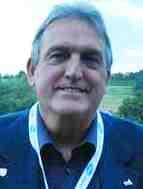
2002
Peter Andrew Windsor returns to the Faculty of Veterinary Science
Following his graduation from The University of Sydney in 1977, Peter Windsor worked at the NSW Department of Agriculture in diagnostic pathology and
A noted expert in livestock health, he led campaigns in Southeast Asia for the control of foot-and-mouth disease and his work in the Philippines in the 1990s assisted in its eradication has included vaccination university, first as Associate Professor in Sheep Health & Production, then Professor of Livestock Health and distinguished contributions to international veterinary science, Windsor received the Kesteven Medal from the Australian Veterinary Association and Australian and New Zealand College of
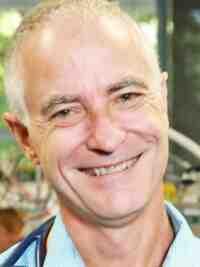
2004
Philip Harold Brain veterinarian to receive a Chartered Membership of the AVA
After graduating from The University of Sydney in 1985, Philip Brain spent 13 years in general practice before specialising in small animal medicine. In 2007, he obtained a Fellowship from the Australian and New Zealand College of Veterinary Scientists.
He spent 19 years on the executive of the Australian Small Animal Veterinary Association (now the AVA small animal group) and was recognised with the AVA’s Meritorious Service Award in 1999. As well as being the first veterinarian to receive a Chartered Membership of the AVA in 2004, he was awarded a Fellowship in 2007.
A supporter of veterinary nursing, he was the first veterinarian to be awarded Honorary Membership of the Veterinary Nurses Council of Australia in 2003. He has been a Director of the Australian Companion Animal Health Foundation since 2009.

A veterinary degree is established at Charles Sturt University at Wagga Wagga
From 2004 to 2011, Kym Abbott (pictured), a 1972 graduate of The University of Melbourne and noted ovine medicine specialist, led the development of the new veterinary science program at CSU, as Director of Veterinary Science then Head of the School of Animal and Veterinary Sciences until 2011. He had previously held academic positions at The University of Sydney and the Royal Veterinary College at the University of London. Abbott later became the Head of the new veterinary school at The University of Adelaide from 2011 to 2015. CSU produced its first veterinary graduates in 2010. By 2014 there were 174. The original veterinary degree at CSU has now been replaced by a Bachelor of Veterinary Biology/Bachelor of Veterinary Science and is accredited in Australia, New Zealand and several other countries.


Leo Jeffcott is appointed Dean of The University of Sydney’s Faculty of Veterinary Science
Leo Jeffcott is a renowned specialist and researcher, who had previously served as Dean of the veterinary school at the University of Cambridge in the UK, before taking the role at The University of Sydney.
Since 1977, he has been an official event veterinarian Internationale, officiating at championships including and six Olympic Games (from 1988 to 2008).
Jeffcott officially retired as Emeritus Professor from The University of Sydney in 2009, but continued until 2020 as Chair of the Australasian Veterinary Examination Committee, which oversees the examination process for foreign veterinary graduates wishing to be registered in either Australia or New Zealand on behalf of the Australasian Veterinary Boards Council.
The RSPCA NSW establishes the Community Animal Welfare Scheme
CAWS addresses the issue of unwanted companion animals with a subsidised desexing, vaccination and microchipping service that’s available in rural areas as well as the Blue Mountains and Sydney Funded by local councils, the program relies on local practitioners. Its educational campaigns help to increase public awareness of animal welfare while also teaching responsible pet ownership.
The program is currently coordinated by Ann-Margret Withers, a 1991 graduate of The University of Sydney and an RSPCA veterinarian of more than 20 years.
Withers also runs the Indigenous Community Animal Health Program on behalf of the RSPCA NSW, which aims to improve the health and safety of children and families in remote NSW Indigenous communities through an integrated animal health and community education program.

Health’ is reborn
An international conference held in New York City by The Wildlife Conservation Society in 2004 saw health experts discuss the movement of diseases in human, domestic animal and wildlife populations.
The resulting ‘Manhattan Principles’ was a list of 12 recommendations to establish a ‘more holistic approach to preventing epidemic/epizootic disease and for maintaining ecosystem integrity for the benefit of humans, their domesticated animals, and the foundational biodiversity that supports us all’.
This led to the coining of the term ‘One Health’ in the context of discussing actual or potential zoonoses.
A group including the World Health Organization, the World Organisation for Animal Health, and the Food and Agriculture Organization of the United Nations developed an unprecedented tripartite agreement in 2008 to work more closely to address the animal, human and ecosystem interface.
Shutterstock

2004
Janice Lesley Allen joins Australian Volunteers
A graduate of The University of Sydney in 1976, Janice Allen joined the RSPCA at its Yagoona hospital, before working in mixed and small animal practice.
She earned a Master in Environmental Management while raising a family, then started working with Australian Volunteers International in 2004 and travelled to Samoa as a Veterinary Manager of the Animal Protection Society.
From 2008, Allen worked with Animal Management in Rural and Remote Indigenous Communities, a not-for-profit organisation founded on a deep respect for Aboriginal and Torres Strait Islander cultures.
Before she retired in 2019, she was its One Health Program Manager, facilitating and coordinating veterinary services in remote communities, with a focus on dog health programs.
AMRRIC has ongoing projects in Western Australia, South Australia, the Northern Territory and Queensland that treat and control dog and cat populations.


2006
Robert Stanley Purdon Johnson is veterinarian to gain Zoological Medicine
A noted reptile and zoo animal veterinarian and author, Robert Johnson graduated in 1977 from The University of Sydney and famously survived brown snake envenomation in 2017.
As well as running a clinic and working at Taronga Zoo, Johnson served as President of the Australian Veterinary Association, was Chair of Vets Beyond Borders, an educator at The University of Sydney and a Member of the NSW Government Animal Welfare Advisory Council.
He became a Member of the Australian and New Zealand College of Veterinary Scientists in Feline Medicine in 1984, and was the first Australian to gain a Royal College of Veterinary Surgeons Certificate in Zoological Medicine.
Johnson was appointed a Member of the Order of Australia in 2021 for service to veterinary science and professional societies.
Sharanne Lee
Raidal
starts at
Charles Sturt University
After graduating from The University of Sydney in 1989, Sharanne Raidal completed a residency, Masters in
Surgery, and a PhD, before
Having moved to Charles Sturt University in 2006, she completed her specialist
Medicine from the Australian and New Zealand College of Veterinary Scientists in 2009, and started working at the new CSU Veterinary Clinical Centre on its
Raidal has served on the ANZCVS Board of Examiners since 2012, including as the
She received the ANZCVS Meritorious Service Award
Veterinarians Australia Award for Excellence in


2007
The Veterinary Practice Act 2003 comes into effect
The Act – which came into effect with the passing of the Veterinary Practice Regulation 2006 – allowed for the recognition in NSW of registered veterinarians working in other states of Australia and introduced compulsory continuing
The Veterinary Surgeons Board became known as the Veterinary Practitioners
An outbreak of
In August 2007, a veterinarian reported observing sick horses at Centennial Park in Sydney to the NSW Department of Primary Industries. It followed an outbreak of EI in Japan, and stallions that had been imported from Japan showing signs of illness at Eastern Creek Quarantine Station.
The largest animal disease emergency in Australian history, it had a devastating effect on the horse industry At its peak, 47,000 horses were infected in NSW The response to eradicate infection in NSW and Queensland involved 10,000 properties and vaccination of more than 140,000 horses. It is reported to have cost more than $100 million.
The last known clinical
Australia was declared free of the infection in June 2008.
Many veterinarians were involved in the response, but special mention should be made of Bruce Christie, the then DPI Chief Veterinary Officer, who became the leading expert spokesperson.

Christine Gaille Hawke establishes veterinary dental practice in Sydney
After graduating from The University of Sydney with the University Medal in 1993, Christine Hawke spent time in general practice in the UK. Returning to the university in 1999, she completed her PhD in Immunology in 2003, and started lecturing in the Faculty of Veterinary Science in small animal dentistry and professional practice in 2005.
After gaining Membership of the Australian and New Zealand College of Veterinary Scientists in Veterinary Dentistry, Hawke established Sydney Pet Dentistry a year later. In 2023, the business grew to open Australia’s first dedicated pet dentistry hospital in Artarmon.
Hawke has been integral to the promotion and education among her peers of oral health assessments in companion animals, as well as dental radiography and the importance of detecting and addressing oral and dental pain.
Joe Pee/Unsplash
Anya Prygunova/Unsplash

2009
Rosanne Maree Taylor becomes The University female Dean of the Faculty of Veterinary Science
After graduating from The University of Sydney in 1982, Rosanne Taylor completed a PhD then moved to the NSW Department of Agriculture’s
After working in research in the US, she returned to the university, becoming Professor of Veterinary
During her time as Dean unt il 2017, Ta y lor led the introduction of the Doctor of Veterinary Medicine to replace the Bachelor of
drove student recruitment, increased the school’s rankings and expanded
Now Emerita Professor and an education consultant, Taylor was also appointed in 2022 as Co-Chair of the Australasian Veterinary Boards Council’s Veterinary Schools Accreditation


Larry Vogelnest is awarded a Public Service Medal for his service to the Taronga Conservation Society Australia
Larry Vogelnest is a zoo and wildlife expert, educator and author who gr a dua t e d from The University of
After working in the UK, he returned to Australia and joined Taronga Zoo
1990, while completing a Master in Veterinary Studies in Wildlife Medicine
He gained Membership to the Australian and New Zealand College of Veterinary Scientists in Zoo
Now a Senior Veterinarian at Taronga, he also manages the Taronga Wildlife Hospital and is a Director of the
He was awarded the Public Service Medal in 2009 for his contribution to conservation medicine and service to the Taronga Conservation
Anthony William English is made a Life Member of Association of Australia
A 1966 graduate of The University of Queensland, Anthony English started at The University of Sydney as
He established the Deer Research Unit and helped realise the Wildlife Health and the Conservation Centre,
A Fellow of the Australian and New Zealand College of Veterinary Scientists in Deer Medicine since 1990, he is a Life Member of the Deer Australia, was Founding President of the Australian Veterinary Conservation Biologists in 1992, and of the World Association
English was appointed Australia in 2006 for service to veterinary science in the field of wildlife health and conservation and to the
 ‘Measured Drawing of the Near Fore-Leg of a Horse’ by Leonardo da Vinci (exact date unknown). Image: Alamy
‘Measured Drawing of the Near Fore-Leg of a Horse’ by Leonardo da Vinci (exact date unknown). Image: Alamy
 Taronga Wildlife Hospital Vet Vet Larry Vogelnest working on a patient. Image: Taronga Conservation Society Australia
Taronga Wildlife Hospital Vet Vet Larry Vogelnest working on a patient. Image: Taronga Conservation Society Australia

201 0s


2011 2010
Ann-Margret Withers starts as a Community Programs Veterinarian
A graduate of The University of Sydney in 1991, Ann-Margret Withers has been an RSPCA veterinarian for over 20 years.
A Community Programs Veterinarian from 2010 to 2020, she has since served as Senior Manager of the RSPCA NSW Outreach Programs. She coordinates the Community Animal Welfare Scheme –which addresses the issue of unwanted companion animals by a means-tested, subsidised, targeted desexing program –and the Indigenous Community Animal Health Program – which provides vet checks, desexing, microchipping, treatment and an education program.
Withers was a Board Member of the not-for-profit organisation Animal Management in Rural and Remote Indigenous Communities from 2007 to 2021 and AMRRIC’s Deputy Chair from 2019 to 2021.
Nicholas Charles Sangster starts as Head of the School of Animal and Veterinary Sciences at Charles Sturt University
Nicholas Sangster is a noted veterinary parasitologist, who graduated from The University of Sydney in 1980
He moved to Charles Sturt University in 2006 as part of the new veterinary degree program and was Head of the School a t t he Wa gga
He was Editor-in-Chief of the International Journal for Parasitology and was awarded the Fellowship of the Australian Society
He worked as Program Manager for Grassfed Productivity for Meat & Livestock Australia from 2016; he was Board Director of the Australian Veterinary Association from 2019 to business in animal health and production and has served as Director of Vets

veterinary scientist to be appointed
A 1984 graduate of The University of Sydney, Robyn
years working with family farmers in Southeast Asia, Africa and Australia on the development of sustainable infectious disease control in
She is a Senior Consulting Fellow for Chatham House’s Global Health Programme, working on policy through
the 100 women awarded the Belle Bruce Reid Medal as an outstanding female veterinary science graduate, to mark the centenary since Alders was appointed
Australia for distinguished service to veterinary science as a researcher and educator and to the maintenance of food security in developing countries, as well as to the
Robyn Gwen Alders


Sentient, The for Animal Ethics is established
Katherine van Ekert, Adele Lloyd and Rosemary Elliot (pictured from left, with animal advocate Lyn White of Animals Australia) met in 2004 while studying at The University of Sydney and became Members of the Faculty-based student organisation Veterinary
After forming its executive committee in 2006 and 2007, they campaigned against the live export and whaling industries and worked with veterinarians, animal welfare organisations and animal
They founded Sentient as an independent Australian veterinary association and registered charity dedicated to promoting animal welfare and ethics, and facilitating veterinarians to play their
the recognition of animal sentience to the national agenda and to advocate the humane treatment
Dr Bruce Christie is appointed
Biosecurity NSW
After graduating from The University of Queensland in 1979, Bruce Christie spent almost 40 years working for the NSW Department
During his time as NSW
from 2002 to 2010, he led responses to a number of exotic disease incursions, including the eradication
NSW and Australia from
Director of Animal and
As Head of Biosecurity
NSW, Christie represented the state on the National Biosecurity Committee and chaired national biosecurity
a key role in forming the NSW Biosecurity Strategy and in the passing of the NSW Biosecurity Act 2015
his long-time position as Deputy Director General, Biosecurity and Food Safety, and as a Director

2012
Graeme Sutcliffe Allan is recognised for his work in the diagnostic imaging
After graduating from The University of Sydney in 1966, Graeme Allan (pictured right, with Richard Malik in 2012) worked at veterinary hospitals in Sydney, before taking up a residency program in radiology at Cornell University in the US. Allan and Robert Nicoll (a graduate of The University of Sydney in 1990) co-ran their diagnostic imaging consultancy Veterinary Imaging Associates while both teaching diagnostic imaging at The University of Sydney for over a decade.
In 1995, Allan co-founded the Australasian Association of Veterinary Diagnostic Imaging with Paul Mahoney and Andrew Wood (also fellow graduates of The University of Sydney) with the aim of furthering the education, knowledge and skills of the local veterinary diagnostic imaging community
In 2012, Allan was awarded a Doctor in Veterinary Science from The University of Sydney, in recognition of his prolific contribution to the field of veterinary diagnostic imaging.

2012
Pets in the Park is established as a registered charity
Pets in the Park was founded to support, build relationships with and improve the wellbeing of homeless people in society living with animal companions.
The charity was established by veterinarians Mark Westman and Leah Skelsey (graduates of The University of Sydney) and veterinary nurses Vicki Cawsey and Linda Warlond (now an award-winning portrait and animal photographer).
Pets in the Park now provides essential veterinary services at its free monthly clinics at locations across Australia.


develop a Hendra virus vaccine
Deborah Joan Middleton of The University of Sydney in 1977) led the research team from the CSIRO’s Division of Animal, Food and Health Sciences that developed the Hendra vaccine.
The team’s pioneering work led to the development of the human treatment against the deadly virus, which was first identified in Australia in 1994. Their research took place at the CSIRO’s Australian Animal Health Laboratory (now the Australian Centre for Disease Preparedness), a high-containment facility for scientific research into the world’s most dangerous infectious agents. The centre helps protect Australia’s multi-billion-dollar livestock and
general public, from emerging infectious disease threats.
Middleton and her team were awarded the CSIRO Chairman’s Medal in 2013 for their groundbreaking work.
The Local Lands Services Act 2013 commences
The Act made NSW the only state where publicly funded biosecurity, natural resources management and agricultural services are provided by a single agency (Local Land Services) under the Minister for Agriculture, Regional Rural Lands Protection Act 1998 , the Rural Lands Protection Amendment Act 2008 and the Catchment Management Authorities Act 2003
2014
Shutterstock

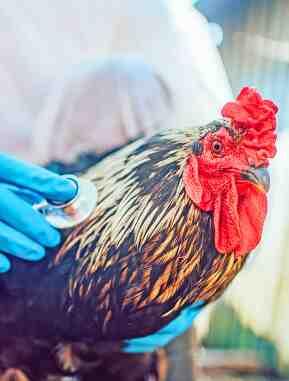

2015 2016
The University of Sydney transitions from undergraduate to postgraduate veterinary degree
The Bachelor of Veterinary Science was replaced with the joint and intercalated Bachelor of Veterinary Biology and Doctor of
The intake of students for the Bachelor of Veterinary Biology commenced in 2014 and Doctor of Veterinary
The combined program
The last graduating year for the Bachelor of Veterinary
Charles Sturt University created an intercalated double degree of Bachelor of Veterinary Biology but retained the title of Bachelor of Veterinary Science for the
The NSW Biosecurity Act 2015 passes, with measures brought into force in 2017
The Biosecurity Act 2015 was enacted from July 2017. It introduced measures for the prevention, elimination, minimisation and management of biosecurity risks in NSW
becomes inaugural of Biosecurity
A 1971 graduate of The University of Sydney, Helen
to eradicate brucellosis and tuberculosis as NSW Chief
She became Executive Director in the NSW Department of Agriculture/ Seddon Memorial Prize for meritorious clinical contribution to veterinary science from the Australian the 100 women awarded the Belle Bruce Reid Medal as an outstanding female
She received a Public Service Medal in 2010 for outstanding public service to agricultural and veterinary appointed a Member of significant service to public administration, biosecurity,
Shutterstock
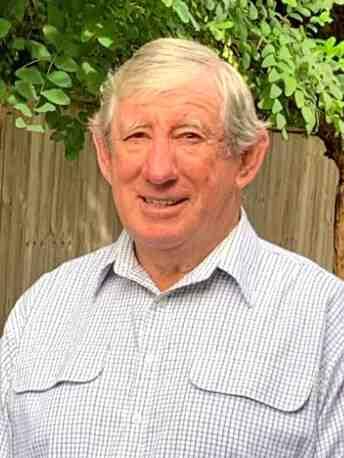

2017 2016
Geoffrey John Scarlett becomes NSW President of the Australian Veterinary Association
After graduating from The University of Sydney in 1975, Geoff Scarlett became a country practitioner and an active contributor to the Australian Veterinary Association, with a particular focus on the
He has worked tirelessly to promote mentoring of both veterinary students and early graduates through both The University of Sydney Veterinary Alumnus Association and the AVA NSW branch, of which he
He has been instrumental in the planning of regional conferences and the AVA’s annual sailing day to help keep isolated veterinarians
Scarlett received the AVA’s Meritorious Service Award in 2021 in recognition of his
retiring, he continues to mentor students and serve
Australian Rainbow Vets & Allies is established
Following their graduation from The University of Sydney in 1995, Tara Cashman and Kate Toyer (pictured from left) started running their practice, Eurocoast Veterinary Centre, in Batemans Bay in 2000.
They initially set up Australian Rainbow Vets & Allies in 2017 as a social and networking community group for Australian LGBTIQA+ veterinarians.
Today, ARVA is Australia’s only organisation providing a voice for LGBTIQA+ people in the veterinary industry As well as promoting LGBTIQA+ visibility at events such as Fair Day, Mardi Gras and World Pride, it provides mentorship, support and advocacy. It was the first Australian veterinary organisation to sign the Gender Identity Bill of Rights. In 2023, the ARVA held its inaugural conference, The Veterinary Kaleidoscope Summit.

The Greyhound Racing Act 2017 comes into force
This repealed the Greyhound Racing Prohibition Act 2016, after the State Government reversed the greyhound racing ban. It reconstituted Greyhound Racing New South Wales and provided for regulation of greyhound racing, the welfare of greyhounds and the creation of the Greyhound Welfare and Integrity Commission.
The Commission – which was established as the independent regulator for NSW’s greyhound industry, on recommendation of the Greyhound Industry Reform Panel – states its mission is to promote and protect the welfare of greyhounds, safeguard the integrity of greyhound racing and maintain public confidence in the greyhound racing industry
Similarly, the Thoroughbred Racing Act 1996 made provision for the establishment, management and functions of Racing New South Wales.
Mark Galer/Unsplash


2018
Melanie Robin Latter is appointed Head of Policy and Advocacy for the Australian Veterinary Association
After graduating from The University of Sydney in 1986, Melanie Latter stayed on as a veterinary pathologist until 1989, after which she obtained a PhD.
In 1990, she moved to the NSW government’s Elizabeth Macarthur Agricultural Institute, then to the NSW National Parks & Wildlife Service as Executive Officer of the Animal Care and Ethics Committee until 1997.
After running a cattle practice on Norfolk Island, she moved to The University of Queensland in 2003 to lecture in veterinary pathology. In 2010, she started at the Queensland Department of Agriculture as Senior Policy Officer in Animal Welfare.
She obtained Membership to the Australian and New Zealand College of Veterinary Scientists in Animal Welfare in 2014. After various roles at the Australian Veterinary Association, she is now responsible for policy development and technical aspects of its advocacy
Frazer Allan is appointed Dean and Head of the School of Veterinary Science
Born in NSW in 1966, Frazer Allan graduated from the Massey University of New Zealand veterinary school
Following a period in private practice, he moved into education, serving as Director of the Massey University Veterinary Teaching Hospital and of Veterinary, Animal and Biomedical Sciences, and then Deputy Vice-Chancellor (Engagement) of the Victoria
Allan served as the Dean and Head of the School of Veterinary Science at The University of Sydney until 2021, when he passed away

Leah Ann Skelsey obtains Membership to the Australian and New Zealand College of Veterinary Scientists
After graduating from The University of Sydney in 2009, Leah Skelsey teamed up with fellow veterinary professionals in 2012 to co-found Pets in the Park, a charity that provides care for the pets of people experiencing homelessness
An interest in oral health and dentistry then led to her pursuing additional studies in dentistry – both
obtained Membership to the Australian and New Zealand College of Veterinary Scientists in Small Animal in 2018, and completed her studies in human dentistry, graduating from Charles Skelsey now operates alongside Christine Hawke at Sydney Pet Dentistry, while still working with


2019 2018
Michael Graeme Garner is awarded the highest honour of the World
Animal Health
After graduating from The University of Sydney in 1980 and completing a PhD, Michael Garner started his long career at the Australian
He has made significant contributions to Australia’s biosecurity, particularly as Manager of Epidemiology at the National Disease Control
Prior to retiring, he was a Senior Principal Research Scientist and Director of the Department’s Epidemiology
He now works with the
As well as receiving the appointed a Member of the service to veterinary science in the field of veterinary epidemiology and the development and promotion
Vanessa Rosemary Duke Barrs and Julia Anne Beatty start as Chairs at the City University of Hong Kong
Noted feline and infectious diseases educators Vanessa Barrs and Julia Beatty (pictured from left) were both academics at The University of Sydney for 20 years before their move.
A graduate of 1990, Barrs became Head of Small Animal Medicine and Director of the Sydney Veterinary Teaching Hospital at the university. She also served as the Veterinary Specialist Representative on the Veterinary Practitioners Board of NSW from 2006.
After graduating from the University of London’s Royal Veterinary College in 1989, Beatty moved to Sydney as a feline specialist and lecturer She became Professor of Feline Medicine, then Associate Dean of Veterinary Clinical Sciences. She worked with the Veterinary Practitioners Board from 2015
Barrs is now Chair Professor of Veterinary Medicine at CityU, while Beatty is Chair Professor of Veterinary Medicine and Infectious Diseases.

Margaret Anne Rose is appointed Chair of The University of Sydney’s Human Research Ethics Committee
A graduate of The University of Sydney in 1968, Margaret Rose completed her PhD at UNSW Sydney in 1980 and started with the NSW Government in 1986. She was appointed Professor of UNSW’s Prince of Wales Clinical School in 2006.
A prominent advocate for animal welfare legislation, Rose played a key role in forming the legislation that controls the use of animals in research, and has been involved in revisions of the Australian Code of Practice for the Care and Use of Animals for Scientific Purposes.
In 2006, she was among the 100 women awarded the Belle Bruce Reid Medal as an outstanding female veterinary science graduate.
In 2018, she was appointed a Member of the Order of Australia for her significant service to animal welfare and the ethics of scientific research, and to veterinary science as an academic and clinician.


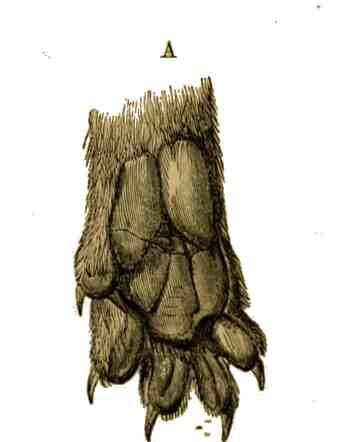
 Study of the anatomy of a cat. Image: Alamy
Study of the anatomy of a cat. Image: Alamy
 Image: The University of Sydney Archives
Image: The University of Sydney Archives
2020s




2020 2021
Michele
Margaret Cotton is awarded the Medal of the Order of Australia posthumously
After graduating in 1973, Michele Cotton started in country practice in Bathurst before taking up teaching at The University of Sydney.
Her work as a consultant veterinarian to Riyadh Municipality Zoo in Saudi Arabia from 1985 sparked a love for wildlife before she returned to the university in 2003 as Director of the Post Graduate Foundation in Veterinary Science.
In 2006, she received the Belle Bruce Reid Medal as an outstanding female veterinary science graduate, and her interest in One Health led to her obtaining a Master of Veterinary Public Health Management in 2009.
In 2015, she co-founded Global Veterinary Solutions, which aims to promote nontraditional veterinary roles.
She was posthumously awarded the Medal of the Order of Australia in 2020 for service to veterinary science, education and professional organisations.
Sally Ann Colgan becomes a Director of the Australian Veterinary Association
After graduating from The University of Sydney in 1990, Sally Colgan was Initially involved in mixed practice, referral and university equine practice, wildlife, the pharmaceutical industry and research.
She founded the Contract Research Organisation SCEC in 2002 and after selling in 2016 (upon which it
she remained Managing Director until 2018. Colgan has since been Managing Director of Veterinary Research Consulting, and served as Chief Executive Officer for Vets Beyond Borders from 2020 to 2022.
An AVA Member for over 20 years, she has been a Director since 2020, past President of the Australian Veterinarians in Industry Group and Convenor of the AVA national conference. She has been elected the 2024 President of the AVA.
Mark Kelman launches a Canine Parvovirus and Feline Parvovirus monitoring system
Following his graduation from Western Australia’s Murdoch University in 2000 (with his twin brother Greg), Mark Kelman worked in veterinary practice at the RSPCA NSW’s Yagoona headquarters and Sylvania Veterinary Hospital, then moved into research at Virbac Animal Health from 2006.
Kelman created Disease WatchDog, a national disease surveillance system that operated from 2010 to 2017, and in 2020 completed a PhD at The University of Sydney on Canine Parvovirus Epidemiology
He subsequently launched Parvo ALERT, a Parvovirus tracking, mapping and alerting system for Australia.
A co-founder and Director of social enterprise charity Paws for a Purpose, and past Director of the charity Pets in the Park, Kelman has served as President of the Australian Veterinary Association companion animal special interest group. He is now Veterinary Operations Manager for the global animal health company Zoetis.
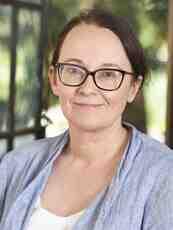
2022
Norris
becomes
the second female
Dean and Head of The University of Sydney’s School of Veterinary Science
After graduating from The University of Sydney in 1990,
residency in small animal medicine and surgery and a Clinical Master at The
She returned to The University of Sydney to complete a PhD while maintaining her clinical
exceptional achievement in the field of veterinary research from the Australian and New Zealand College
2020, she was awarded the Seddon Prize for service to
Norris was a Professor in Veterinary Microbiology
2002 to 2022, before being appointed Head of School and Dean of the Sydney
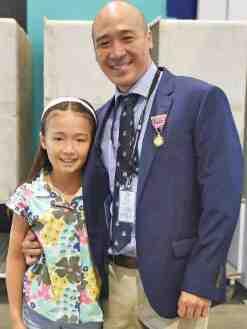

Christopher John Tan is appointed SASH Co-director
After graduating from The University of Sydney in 2000, Chris Tan spent eight years in veterinary general practice in Australia and the UK before returning to the university to undertake a residency in small animal surgery After completing a PhD in Veterinary Surgery, he went on to become a Lecturer and sought-after speaker
As well as being appointed Hospital Co-director of SASH (Small Animal Specialist Hospital) Alexandria in 2023, Tan continues to mentor and teach medical and veterinary science students as Conjoint Professor at UNSW and Associate Professor at The University of Sydney, where he is also involved in post-graduate veterinary education through the Centre for Veterinary Education.
A veterinarian for the Royal Agricultural Society of NSW since 2007, he is also a Board Member of AO VET, a nonprofit organisation of surgeons, scientists and other veterinary surgery specialists that aims to advance the practice of veterinary orthopaedic surgery to improve patient outcomes.
NSW Parliament launches an state’s veterinary workforce shortage
The Upper House committee for Regional NSW launched an investigation into concerns of burnout, poor mental health, and financial obstacles in the industry, as well as workforce shortages – particularly in rural, regional and remote NSW – that place animals at risk as well as those working in the profession.
The Committee heard from veterinary business owners, charities, regulators, educators, nursing, industry, government departments and the public.
The shortages have been reported in small and large animal practice, research, government, academia, industry and pathology. According to the AVA’s Workforce Survey 2021 report, in NSW 40.51% of veterinary job vacancies took more than 12 months to fill. Reasons include: growth in pet veterinarians to regional areas and into production animal
work environments and excessive workloads.


2024
A landmark report is released by the Veterinary Schools of Australia and New Zealand
Entitled Rethinking Veterinary Education, the landmark VSANZ report called for an overhaul in the way future veterinarians are educated.
VSANZ comprises the eight veterinary schools of Australia and New Zealand, who work together to advance education and research in the region. The report was the result of close cooperation between the deans of the schools.
The first of its kind in Australasia, the review by an independent expert panel was prompted by rapidly changing veterinary and educational challenges, and recognition that the model of training and registering veterinarians has not fundamentally changed for decades. It also highlights the vital role of veterinary experts in managing the impacts of climate change, improving biosecurity and disease prevention.
The panel was chaired by Helen Scott-Orr, the former Australian Inspector-General of Biosecurity and former Chief Veterinary Officer of NSW.
New accreditation standards are set
knowledge, skills, values and attitudes they need on “day one”
decision-making (animal handling, problem diagnosis, clinical examination, appropriate treatment and management (sedation, anaesthesia, routine surgery,
triage, pain management, euthanasia, post-mortem and management (assess and advise on animal populations’ health and welfare status, identify and signs, and implement
colleagues and authorities, and maintain accurate clinical records for case
(demonstrate, respect, and promote inclusivity, diversity, teamwork, and appropriate external professional identity (professional, legal and ethical behaviour, medicine prescription and reporting, self-directed learning, appropriate referrals and
management (understand management principles and legislation, and apply risk management for animal and
biosecurity, biosafety and infection prevention and control principles, ante-and post-mortem inspections,
(with clients, the public,
review and evaluate evidence to practise evidence-based veterinary science and contribute to advancing
A yla V erschueren/Unsplash

Animal and Veterinary Bioscience graduates of The University of Sydney
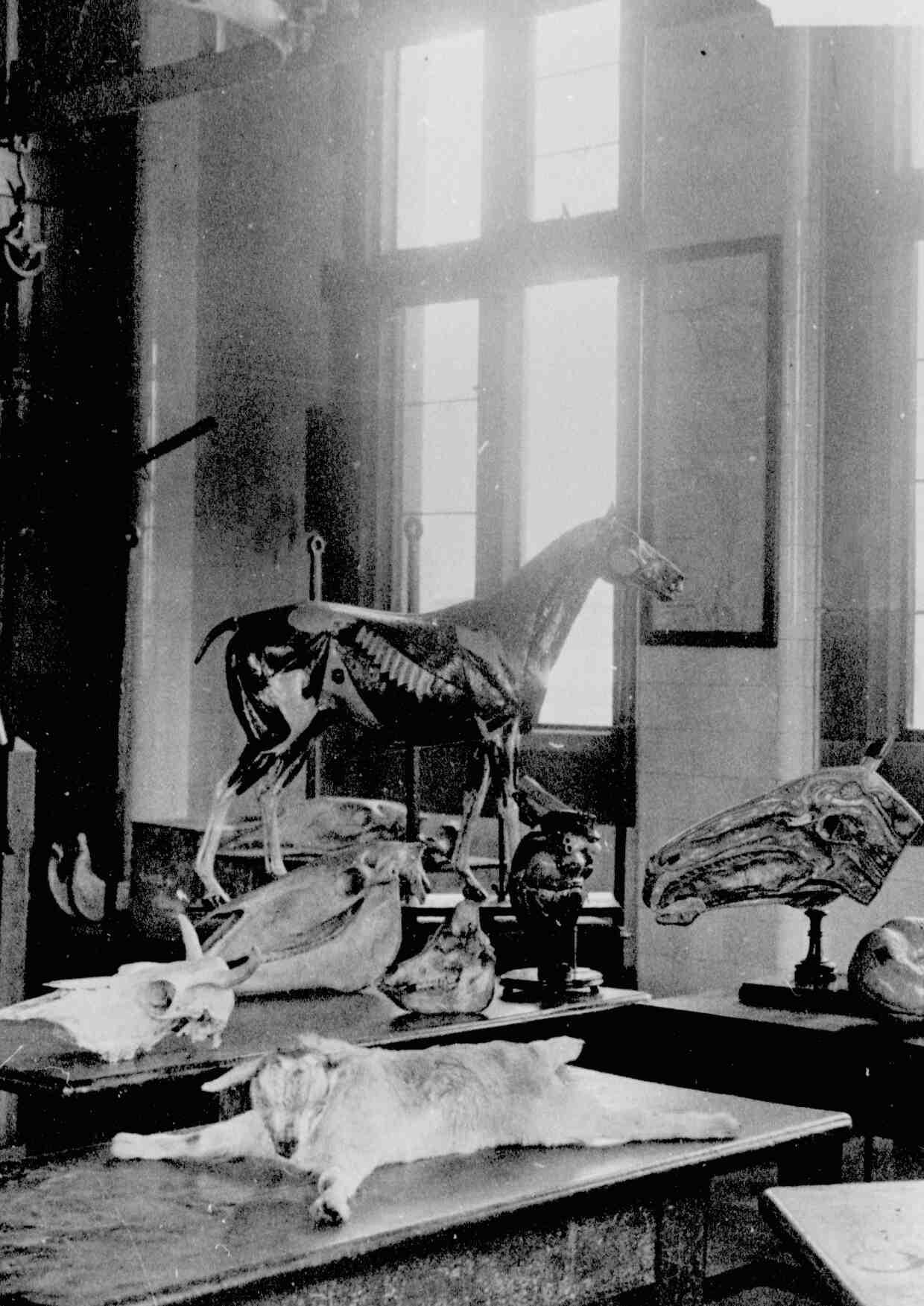
eterinary Practitioners Board of NSW Centenary Committee

Professor Emeritus at The University of Sydney
A 1973 graduate of The University of Sydney, Paul Canfield spent two years in mixed practice in Nowra and Blacktown before returning to the university to complete a PhD. From 1980 to 2010, he worked at the Faculty as Professor of Veterinary Pathology and Clinical Pathology and the Director of Veterinary Laboratory Diagnostic Services.
Canfield’s research has spanned domestic animals, laboratory animals and wildlife, with a major emphasis on the koala, and he has worked with organisations such as the Koala Hospital in
He served as President of both the Australian and New Zealand College of Veterinary Scientists Pathobiology chapter and the Australian Society of Veterinary Pathology, and a Councillor for the Centre for Veterinary Education.
Canfield has received the TG Hungerford Award for Excellence in Continuing Education, and the Australian Veterinary Association’s Seddon Prize for clinical contributions to veterinary science. In 2015, he was appointed a Member of the Order of Australia for significant service to veterinary science education, particularly in the field of morbid anatomy and clinical pathology, and to professional associations.
As Professor Emeritus at The University of Sydney’s School of Veterinary Science, he continues to teach and mentor students.
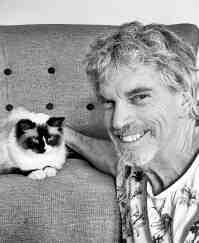
Mark Lawrie
Veterinary Teaching Hospital
Following his graduation from The University of Sydney in 1983, Mark Lawrie started his career in veterinary public health at abattoirs, then as a pig vet, before working at the RSPCA in both Newcastle and Yagoona. After spending time overseas, he returned to the RSPCA NSW as Veterinary Hospital Senior Manager, then Chief Veterinarian, leading a team of 100 veterinarians and nurses across four busy hospitals. During his time in the role, he was integral to the establishment of the Community Animal Welfare Scheme (CAWS), facilitated animal welfare liaison with the Australian Veterinary Association (including campaigning for the end of tail docking), and acted as a media spokesperson.
Lawrie has also served as Director of Murdoch University Teaching Hospital, Asia Pacific General Manager for RxWorks veterinary software company, and was the CEO of the University Veterinary Teaching Hospital, Sydney from 2017 to 2022.
As well as being a veterinary consultant for the International Fund for Animal Welfare, he has volunteered as Founding Secretary of the national not-for-profit organisation Animal Management in Rural and Remote Indigenous Communities, and was National President of the AVA. He is a Member of the Australian and New Zealand College of Veterinary Scientists in Animal Welfare.
V


Deborah Neutze
President of the ACT Veterinary Practitioners Board
A 1983 graduate of The University of Sydney, Debbie Neutze initially working at Forestville Veterinary hospital before moving to Guilford Veterinary Hospital, of which she became a partner and eventually owned, along with two other practices, for more than 25 years. Her 10 years at the Australian Veterinary Association have seen her in various management roles, including Executive Officer of the NSW Division and the Australian Veterinary Practice Management Association (now the Veterinary Business Group), National Strategy Manager, Policy Manager and National Membership and Strategy Manager
During her time at the AVA, she has developed and introduced instigated the gate-keeper training using the Mental Health First Aid internship guidelines and returnprofession at FairWork hearings conference focused on the issues faced by women in the veterinary team to develop the Thrive Mental Health and Suicide Prevention Framework and Cultivating Safe Teams Program.
As well as now being President of the ACT Veterinary Practitioners Board, Neutze runs a veterinary industry consultancy business and is part of the AVA Thrive Veterinary Wellness Strategy Group.
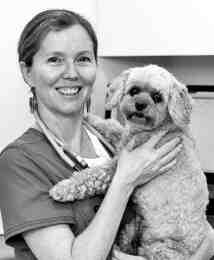
Anne Quain
Senior
Lecturer
at The University of Sydney
After graduating from The University of Sydney in 2005, Anne Quain went into small animal practice while also working as a journalist for the veterinary and mainstream media.
As well as completing a Master in Veterinary Studies and a PhD in Veterinary Ethics, she is a Member of the Australian and New Zealand College of Veterinary Scientists in Animal Welfare, and a Diplomate of the European College of Animal Welfare and Behaviour Medicine in Animal Welfare Science, Ethics and Law Quain has been an active Member of the Australian Veterinary Association NSW Committee and the Animal Welfare Advisory Committee. Together with Siobhan Mullan, she co-wrote Veterinary Ethics: Navigating Tough Cases. She also co-edited The Vet Cookbook: A Collegial Collaboration
Now a Senior Lecturer at The University of Sydney’s School of Veterinary Science, Quain is the Director of the Doctor of Veterinary Medicine Mentoring Program, and an active mentor for graduates through the AVA.
Passionate about primary care, she continues to work in private practice She is a Member of the Animal Welfare Advisory Council of NSW, and Chair of the Animal Welfare Science, Ethics and Law Credentialing Committee for the European College of Animal Welfare and Behavioural Medicine.

Ruth Thompson
Former President of the NSW Veterinary Practitioners Board
Ruth Thompson graduated from The University of Sydney in 1976 and worked in private practice in Western Australia before joining Murdoch University as a clinical instructor and lecturer In 1981, she became a Member of the Australian and New Zealand College of Veterinary Scientists in feline medicine. After a return to private practice, she moved into radio broadcasting and spent five years working at the Australian Broadcasting Company in Orange Thompson and her husband Howard purchased Blayney Veterinary Hospital in 1987, growing it from a single vet to a nine-vet primary practice while raising a family. She continues to work there part-time while also farming cattle and sheep.
She has served as President of the NSW Veterinary Practitioners Board, on the Administrative Decisions Tribunal and as editor of BoardTalk, and is a Member of the Animal Ethics Committee at the Nestlé pet food facility at Blayney She has received The University of Sydney Faculty of Veterinary Science Practice Partner Award, and the Australian Veterinary Association’s Seddon Prize for clinical contributions to veterinary science. In 2006, she was among the 100 women awarded the Belle Bruce Reid Medal as an outstanding female veterinary science graduate, to mark the centenary of the registration of Australia’s first woman in 1906.
Constraint to construct: the nature of regulation
 Mark Simpson President of the NSW Veterinary Practitioners Board, 2015-2021
Mark Simpson President of the NSW Veterinary Practitioners Board, 2015-2021
Tlecture on regulation in the veterinary degree at The University of Sydney in the 1980s. The closest we got to discussing regulation was when we were taught – by people who didn’t know – about the type of mistakes that might lead to us being deregistered and losing our livelihood. Scary stuff, but characteristic of the veterinary regulation discussion at that time: constraining us from doing the wrong thing with a very big stick. And the vehicle delivering that feared
Like most veterinarians, I had only the barest of limited interaction with the Veterinary Surgeons Board of NSW, as it was then known – and I did what I could to keep it that way
My registration as a new graduate was my only interaction with the Board, and veterinary regulation then dimmed as a priority in my life as I just kept my head above water learning the art of veterinary practice. However, when a practitioner in a neighbouring practice got into trouble with the Board, veterinary regulation once again became very proximate and threatening. He was a recent graduate and had a complaint concerning his handling of an out-of-hours call. He was not well supported by his practice, and was found guilty of professional misconduct. I could see the effect the whole series of events had on his mental health. My fear of the acrimony and punitive nature of veterinary regulation, and
left me very anxious that chance might deliver me a vexatious client, or circumstances that I might not be prepared for, and then I, too, would have to deal with the Board.
In the mid-1990s, I opened a new hospital and, like all veterinarians starting a practice, I worked to to establish a business and a culture of excellence. My outstanding memory of the registration process was an extended series of letters discussing the only concern the Board had about the proposed new hospital: possible names we could and, more importantly, could not use for our business. It felt so bureaucratic and removed from the central objective of regulating
The next phase of my veterinary career brought the usual things that worry us about starting and building a small animal practice. While we maintained contact with the Board through annual registration and hospital licence renewal, reading BoardTalk and anticipating the triennial visits from the hospital inspector, the Board and veterinary regulation shifted to the periphery of our endeavours.
Fast forward a decade-and-a-half, and the Veterinary Surgeons Act had been replaced by the Veterinary Practice Act in 2006. The Act had been in place for a three-year term of the renamed Veterinary Practitioners Board when a position became open to join the Board for its next term. I thought this could be a way to contribute to the profession that had already given me so much. So I nominated for, and eventually became, part of the Board. What a revelation.

I was fortunate to join a Board that had evolved. The one in the early stage of my career had operated under legislation that developed in the veterinary profession and led to the Board’s reputation for having a more litigious and acrimonious approach to regulation. But the administrative team and Board that had been formed under the new legislation were determined to foster a different culture. As the instrument of the new legislation, the Registrar Glenn Lynch played a pivotal role in formulating the manner in which the Board worked with the profession to develop a more consensus-styled approach to regulation.
Perhaps unsurprisingly, the part of the Board’s work that struck me
was the investigation of complaints. The cases I knew, and the ones I learnt about through BoardTalk, gave me some insight to the import of complaints, but nothing could prepare me for the true effects on everyone involved. I began to see, up close and personal, the way formal complaints to the Board
how those complaints arose from events that were very distressing to the members of the public who made them. While it was not apparent to veterinarians or complainants, the processing of those complaints also had a profound effect on the Board members and administrative staff who worked to bring them to a resolution. I have repeatedly witnessed the zeal for justice, the deep respect for both complainant and veterinarian, and the commitment to a fair outcome that was in the best interests of the welfare of
animals, the general public and the veterinary profession.
Of course, none of this has been apparent to either the veterinarian or complainant, both of whom felt, in almost all instances, unfairly treated by the process and outcome. Some of my close colleagues have been the subject of complaints, and I have been distressed to see the way the process affects veterinarians.
pillars on which the standards of our profession in NSW is founded”
But viewing the entirety of the complaints process, and all the effort that goes into producing a
that it is one of the pillars on which the standards of our profession in NSW is founded. I am happy to defend any of the decisions about complaints made by the Board and I am very proud of the outcomes the Complaints Committee achieved during the time of my involvement.
Since that initiation, I have seen the Board more generally, however, the Complaints Committee, and
continue to grow in complexity and sophistication. And consistent with the evolution of regulation of the profession more generally, there are ongoing changes to the complaints process across Australasia. These changes are increasingly focused on outcomes and the wellbeing of the veterinarian involved, moving away from discipline and punishment as the primary tool used to manage
the standards of veterinary practice. I am proud to report that NSW is at the fore in promoting these developing changes to complaint management.
with the Board, I have acted as the NSW delegate to the Australasian Veterinary Boards Council (AVBC), which has provided me with a view of the veterinary regulatory environment across Australia and New Zealand.
complaints process in my Board as one of the best across the country and has allowed me to act as a conduit for the ideas and principles that might be useful more widely.
The recent focus of the AVBC’s Sustainable Practice Committee on the Complaints Communication Project, and the developing conversation among the regulatory
the important function of complaint investigation in veterinary regulation, as well as in veterinarians’ wellbeing.
Over the course of my decade-anda-half involvement with the Board, I have come to view the evolution of the complaints processes as applied to the veterinary profession as emblematic of the broader changes to the Board and veterinary regulation in NSW These changes have been part of an arc that has seen the Board go from a body distant to but overseeing the veterinary profession to one that is a genuine stakeholder in the profession. The Board balances this connection to the profession with its responsibilities to animal welfare and public interest, and this constant reference to its tripartite responsibility has only served to strengthen the authority of the Board within the profession.
The changing landscape of the veterinary profession
 Ruth Thompson
Ruth Thompson
President of the NSW Veterinary Practitioners Board, 2009-2015
In the spotlight of 2024, we commemorate a remarkable milestone – the centenary of
in NSW. Just as momentous occasions invite us to celebrate, they also provide opportunities for
Since my graduation in 1976 from The University of Sydney, my career has seen me work in private practice and veterinary education, own and expand a mixed practice veterinary hospital, run a large sheep and cattle farm, and serve on the Veterinary Practitioners Board of NSW for 16 years, all while raising a family. In that time, I have seen remarkable changes in the profession, the communities we serve, and the animal industries.
The veterinary surgeons who were
primarily treated horses, sheep and cattle. Bovine tuberculosis, canine distemper and feline panleukopenia were commonplace. There were no vaccinations, very few effective medications, and heavy manual work. Cattle and horse industry was abundant, and most rural and regional communities had a private veterinary practitioner within easy reach.
Rural and regional veterinary services have changed over the decades. Sheep and cattle numbers in some areas have fallen, and there are fewer horses on farms. Farmers
and have NSW Local Lands Services veterinarians to provide on-farm disease investigation at no cost. Non-veterinarians can now do tasks previously restricted to veterinarians, such as pregnancy testing of cattle and horse dental work. All these
things added up to a slow yet steady decline in large animal call-outs. Vets adjusted to less ‘on-farm’ practice and became more comfortable
ever-growing numbers of cats, dogs and “exotics” inside the increasing number of new and renovated veterinary hospitals.
However, in 2024 some NSW regional communities have no access to veterinary hospitals, and some have access to small animal vets only This is placing great pressure on those practices that still provide large animal services. Many mixed and large animal practices simply can’t do any more work, while others can’t afford to have their vets travel hours to assist another community Some practices in rural and regional areas do not offer after-hours services. The sick dog can be taken to another town but the local services may already be overwhelmed.
While market forces may have led to this situation, there are concerns for the wellbeing of those working in these conditions, as well as for the welfare of animals. This is hopefully changing with young graduates heading to the lifestyle of the regions, but they need experienced large animal/mixed practitioners to teach them the necessary skills. While many of these challenges mirror the challenges faced in human medicine and the medical profession in rural areas, they are less widely discussed.
Like professions such as dentistry and medicine, veterinary science has seen a shift in gender numbers. In
Faculty of Veterinary Science at The University of Sydney. The numbers of female students rose steadily after my enrolment year of 1971 from 12% to 61% by 1976, then 66% by 1999, and 80% by 2016. Early decades

saw many female graduates return to the Faculty in education positions, including 1940s graduates Virginia Osborne and Jenifer Edols. While the Faculty has a long history of employing women, it was not until
Rosanne Taylor, was appointed. I can attest that being a full-time rural veterinarian and a parent continues to be challenging. Few childcare options exist for those in clinical practice working long shifts, weekends, after-hours and on call.
Veterinarians have embraced technology. We were excited to have radios, followed by the wonders of the fax machine and mobile phones. While coverage is variable across the state, the internet and all the devices are now integral to practice function: for researching cases, running software, taking part in webinars, accessing records while in remote stables, discussing cases with distant colleagues, and for clinic branches to use the same technology in real time Telemedicine was also widely adopted during Covid-19.
While consultation records in the 1970s were often as short as two handwritten lines on a small card, they can now include lab reports, referral letters, photos and even academic articles. Meanwhile,
and image generation means safer working conditions for staff and patients, and practices can now have extensive clinical pathology
issues of distance from commercial labs. Specialist veterinary services with access to expert services now exist in metropolitan centres across the country – though not all clients can afford this care or are located within reach of specialist services,
so it is crucial for veterinary general practice to continue offering care.
has brought to the veterinary industry,
social media access and information sharing, and the potential for online criticism and bullying that can occur in any profession. Fifty years ago there was little conversation about the mental health of veterinarians and its impact on the profession’s future.
“The profession is already using genomics, and there are many exciting advances ahead”
In 2024, we have greater insight into the issues affecting the profession such as burnout, anxiety, depression, addiction and fear of failure. The suicide rates in our profession are alarmingly high. The 2008 study Suicide in Australian Veterinarians led by veterinary pioneer Helen Jones-Fairnie at Curtin University in Western Australia revealed that of the 11 veterinarians who had intentionally caused their own death in the 13-year period from 1990 to 2002, nine of them had been based in rural or regional towns.
The Australian Veterinary Association is now collaborating
the workplace that are affecting practitioners’ mental health and wellbeing, and also working with universities to educate students about their mental health prior to starting work. But there is still a lot of work that needs to be done.
The practice hospitals and clinic buildings are vastly different now to those of the 1970s. Previous Boards initiated minimum standards, available. Although each additional
causes short-term angst with some veterinarians, the function of the Board, after all, is to protect animals and the public as outlined in the Act. Under the guidance of Glenn Lynch as Registrar and Hospital Inspector, changes over the decades were put together to form the current ‘checklist’ that is available online. Minimum
raised in line with developments in veterinary medicine and surgery I can’t guess the profession’s path over the next 100 years. After all, I could never have imagined the internet when building a library for textbooks. The profession is
robotics, and genomics, and there are many exciting advances ahead for the veterinary industry There is increasing recognition of workplace and individual health and wellbeing,
animal welfare, and development of sustainable farming practices, and working to understand the impacts of climate change.
I have had a busy yet such an incredibly rewarding career and I would not change my path. My hope is that all future graduates get involved with the profession and the AVA, and continue to foster and drive the changes that are needed in the veterinary profession in Australia. But mostly, my wish is that they enjoy their work as much as I have over the past 50-plus years.



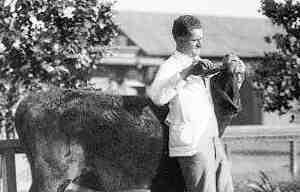


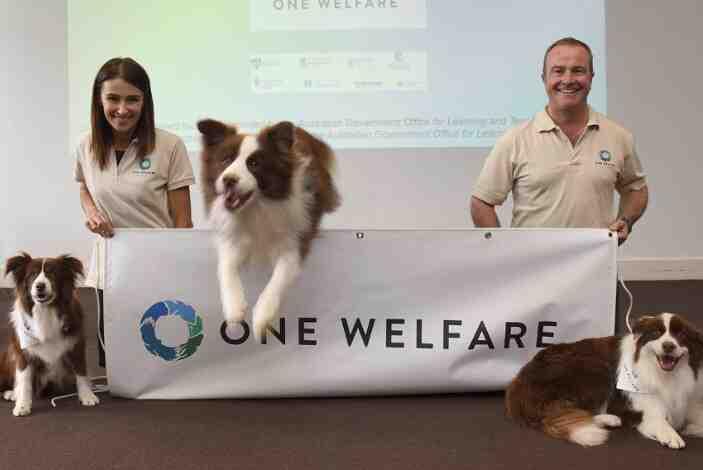



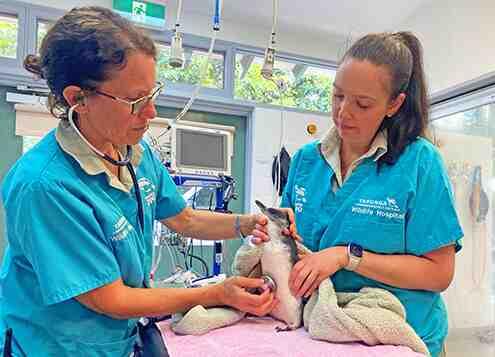
 Images: Taronga Conservation Society Australia & The University of Sydney Archives
Images: Taronga Conservation Society Australia & The University of Sydney Archives





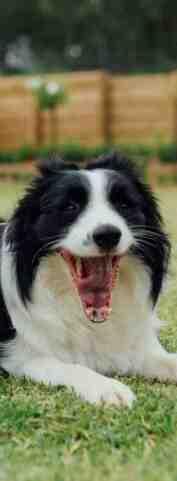


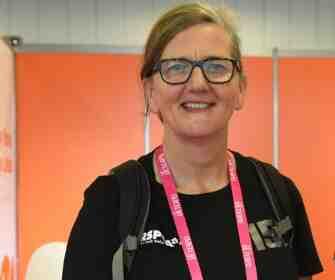
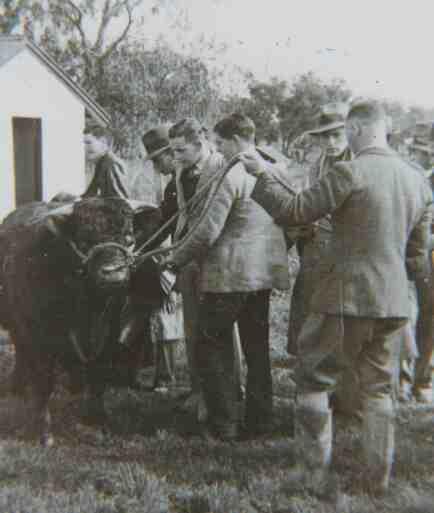






Veterinary Practitioners Board of NSW
Celebrating 100 years
With
Edited by Katie Hendry. Designed by Ingrid Sant
thanks to The University of Sydney Archives, Taronga Conservation Society Australia, Destination NSW & the NSW Department of Primary Industries



 Rex Gunn operating in The University of Sydney’s old surgery in 1925.
Image: The University of Sydney Archives
Rex Gunn operating in The University of Sydney’s old surgery in 1925.
Image: The University of Sydney Archives







 A parade through Sydney in 1934. Image: Alamy
A parade through Sydney in 1934. Image: Alamy
















 JD Stewart (left) with house surgeon JK Hawthorne at The University of Sydney’s Veterinary School in 1927. Image: The University of Sydney Archives
JD Stewart (left) with house surgeon JK Hawthorne at The University of Sydney’s Veterinary School in 1927. Image: The University of Sydney Archives
 The University of Sydney Regiment in the early 1940s.
Image: The University of Sydney Archives
The University of Sydney Regiment in the early 1940s.
Image: The University of Sydney Archives









 Virginia Osborne and Rex
Veterinary Science at The University of Sydney in 1981 Image: The University of Sydney Archives
Virginia Osborne and Rex
Veterinary Science at The University of Sydney in 1981 Image: The University of Sydney Archives
 The University of Sydney Calendar Supplement 1952.
Image: The University of Sydney Archives
The University of Sydney Calendar Supplement 1952.
Image: The University of Sydney Archives















 David Hutchins at the Rural Veterinary Centre in the 1970s.
Image: The University of Sydney Archives
David Hutchins at the Rural Veterinary Centre in the 1970s.
Image: The University of Sydney Archives
















 Image: The University of Sydney Archives
Image: The University of Sydney Archives
 A veterinary conference at The University of Sydney in 1977. Image: The University of Sydney Archives
A veterinary conference at The University of Sydney in 1977. Image: The University of Sydney Archives














 Taronga Western Plains Zoo at Dubbo. Image: Destination NSW
Taronga Western Plains Zoo at Dubbo. Image: Destination NSW
 Veterinary students working on a dog at the veterinary hospital in 1986.
Image: The University of Sydney Archives
Veterinary students working on a dog at the veterinary hospital in 1986.
Image: The University of Sydney Archives














 Dr Harry Cooper behind the scenes
Dr Harry Cooper behind the scenes
 Elizabeth Macarthur Agricultural Institute. Image: NSW Department of Primary Industries
Elizabeth Macarthur Agricultural Institute. Image: NSW Department of Primary Industries













 Richard Malik with some four-legged friends
Richard Malik with some four-legged friends
 Taronga Zoo Sydney Image: Destination NSW
Taronga Zoo Sydney Image: Destination NSW






















 ‘Measured Drawing of the Near Fore-Leg of a Horse’ by Leonardo da Vinci (exact date unknown). Image: Alamy
‘Measured Drawing of the Near Fore-Leg of a Horse’ by Leonardo da Vinci (exact date unknown). Image: Alamy
 Taronga Wildlife Hospital Vet Vet Larry Vogelnest working on a patient. Image: Taronga Conservation Society Australia
Taronga Wildlife Hospital Vet Vet Larry Vogelnest working on a patient. Image: Taronga Conservation Society Australia

























 Study of the anatomy of a cat. Image: Alamy
Study of the anatomy of a cat. Image: Alamy
 Image: The University of Sydney Archives
Image: The University of Sydney Archives

















 Mark Simpson President of the NSW Veterinary Practitioners Board, 2015-2021
Mark Simpson President of the NSW Veterinary Practitioners Board, 2015-2021

 Ruth Thompson
Ruth Thompson












 Images: Taronga Conservation Society Australia & The University of Sydney Archives
Images: Taronga Conservation Society Australia & The University of Sydney Archives















